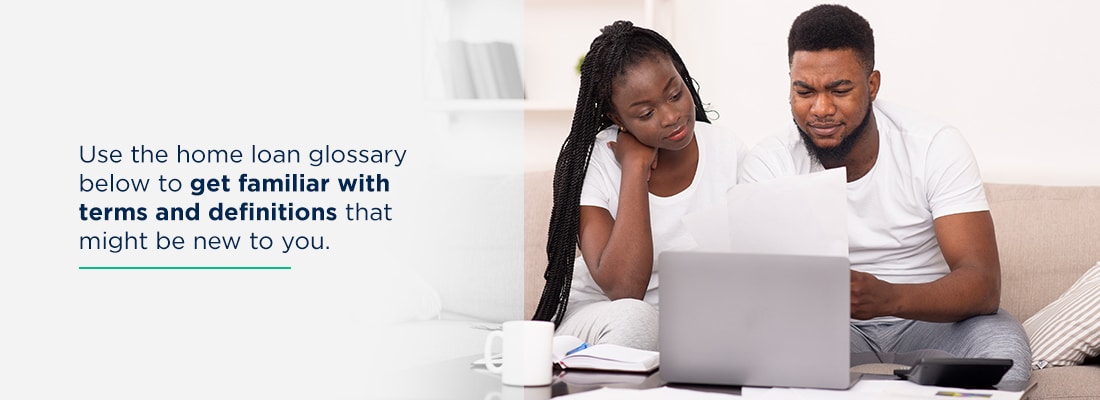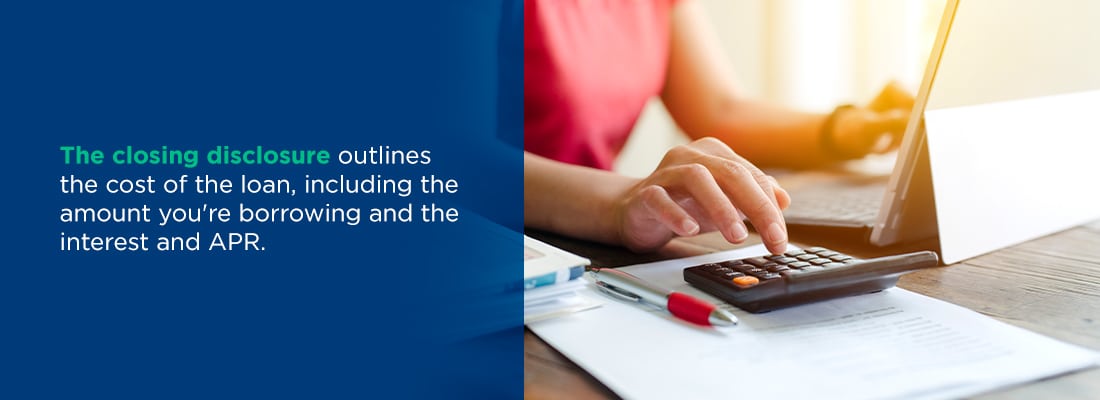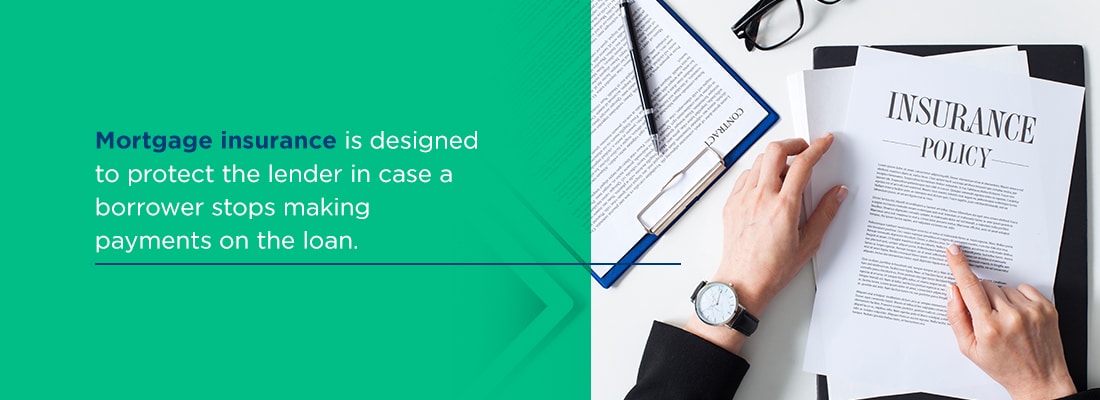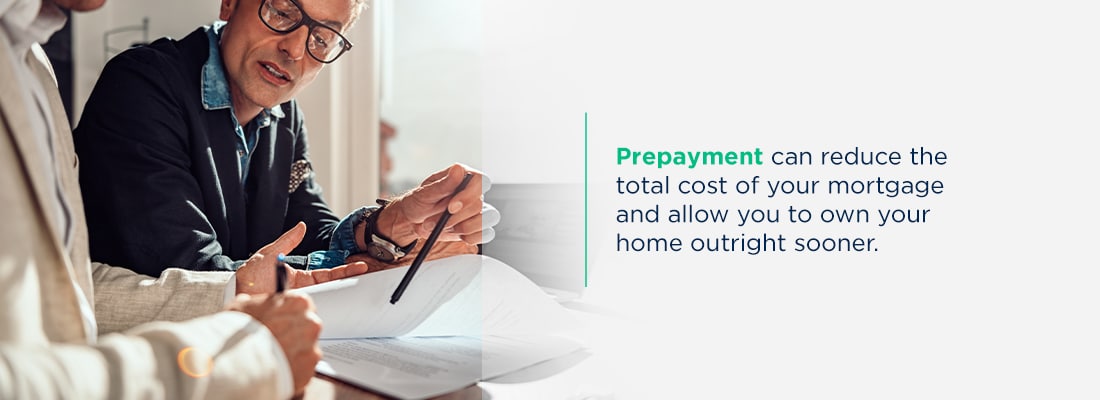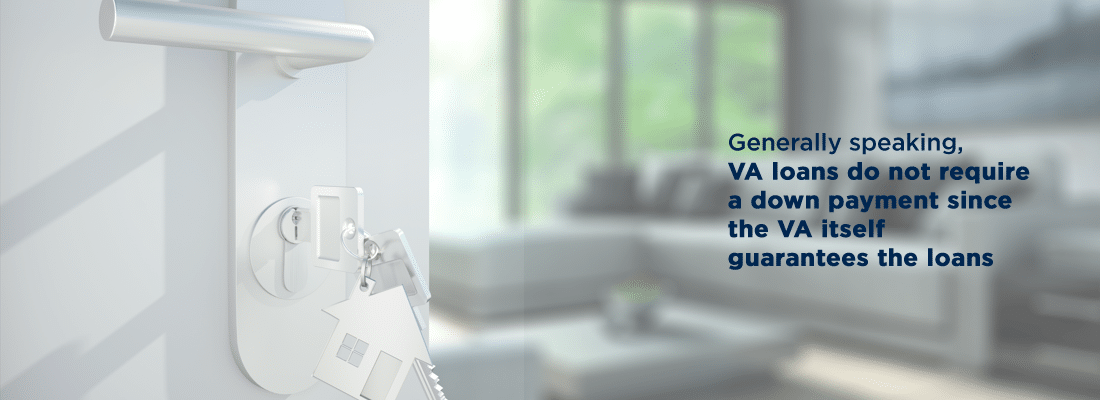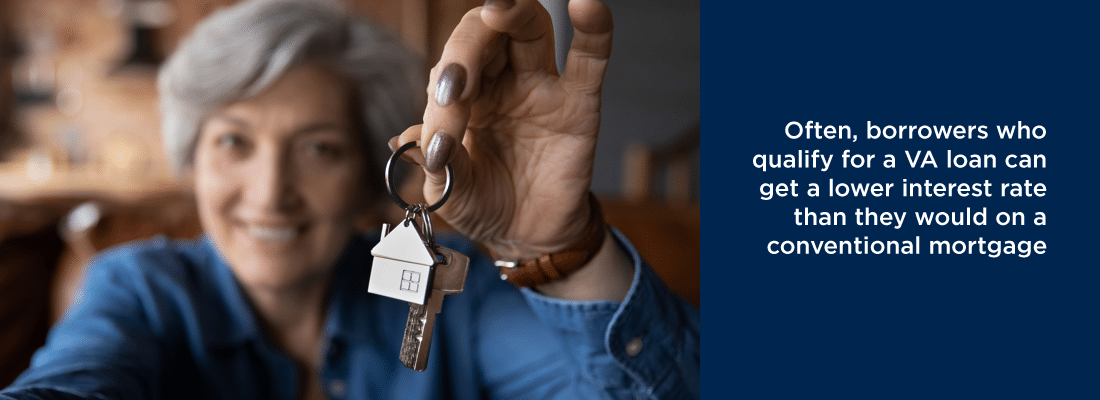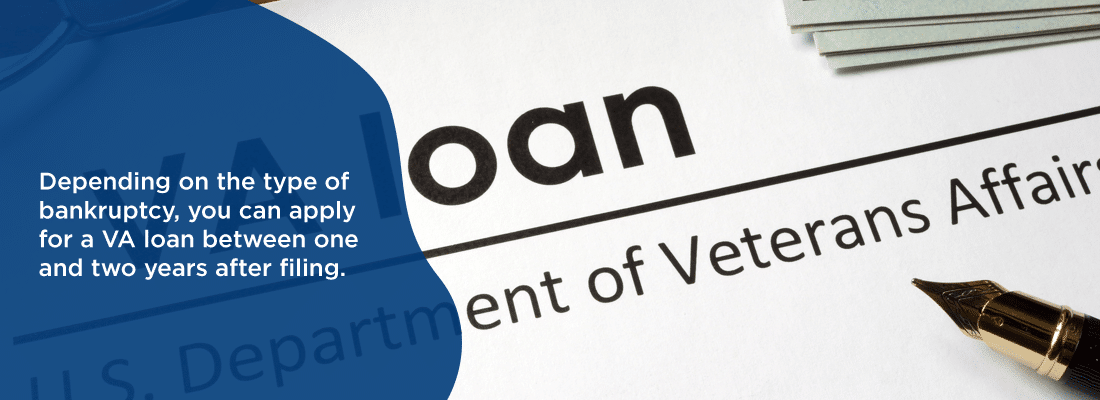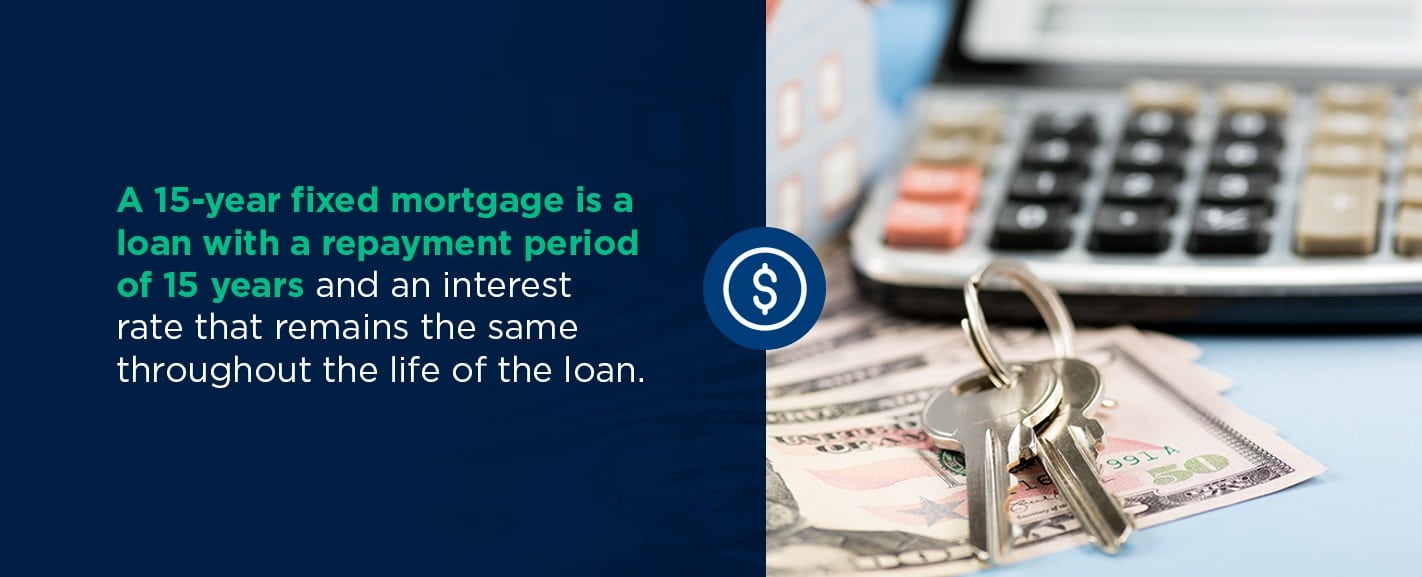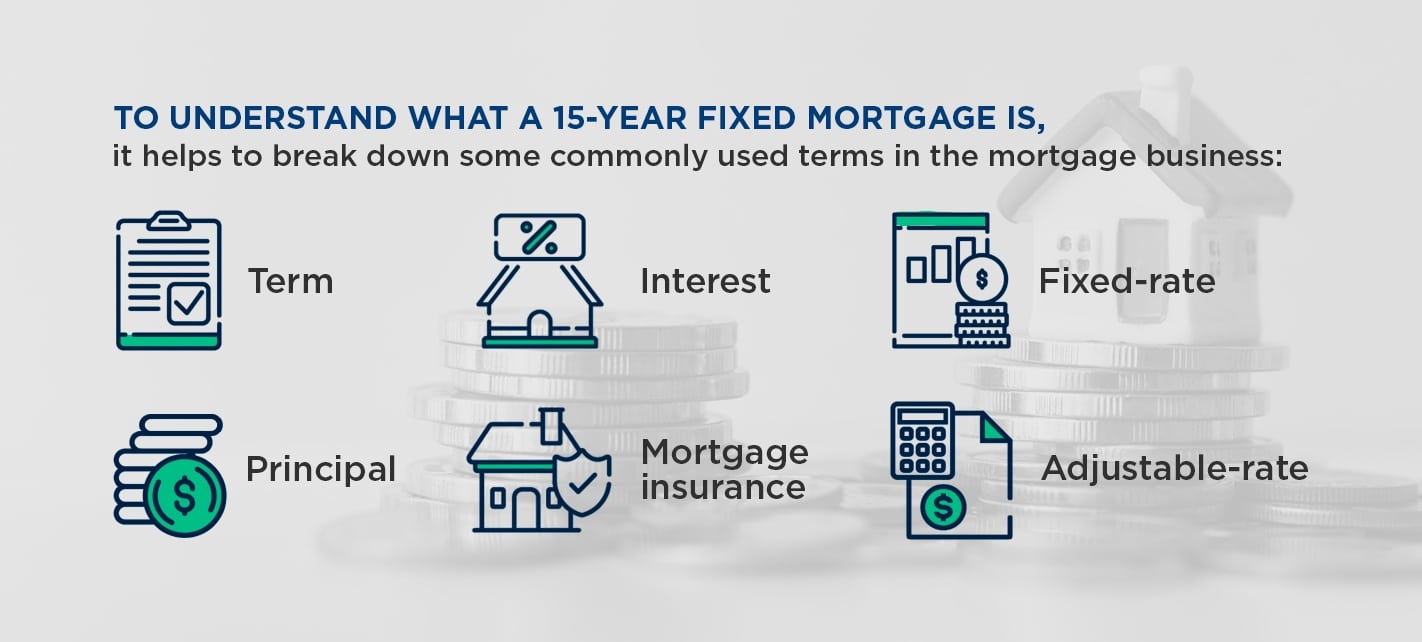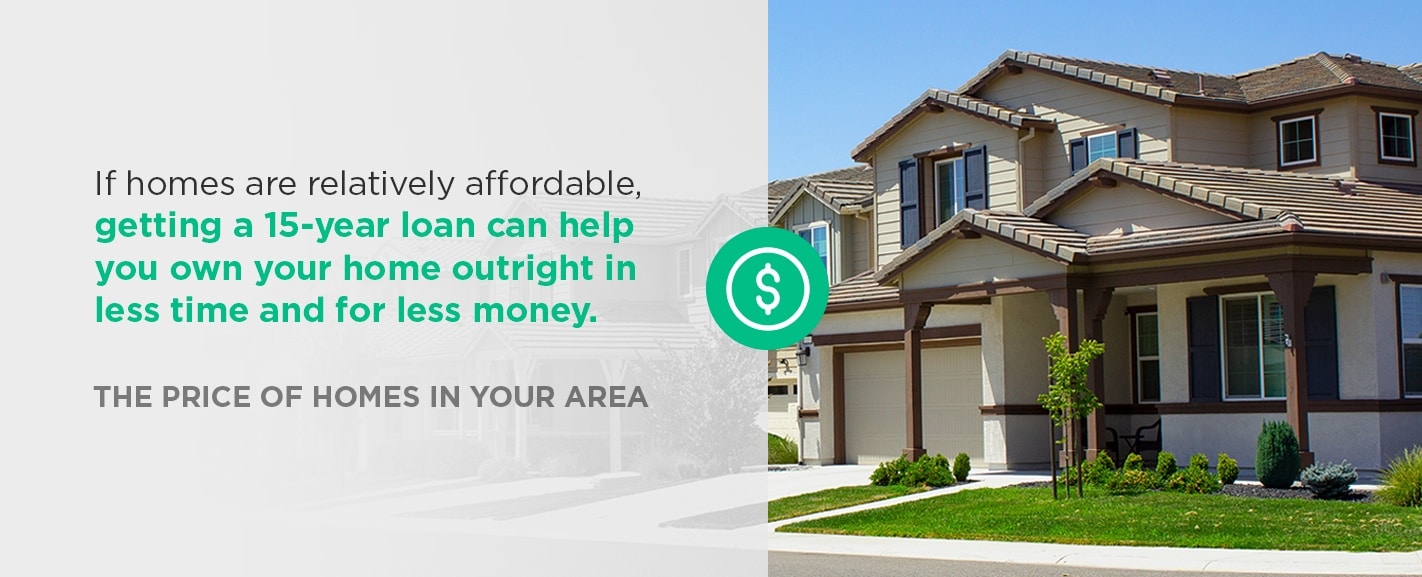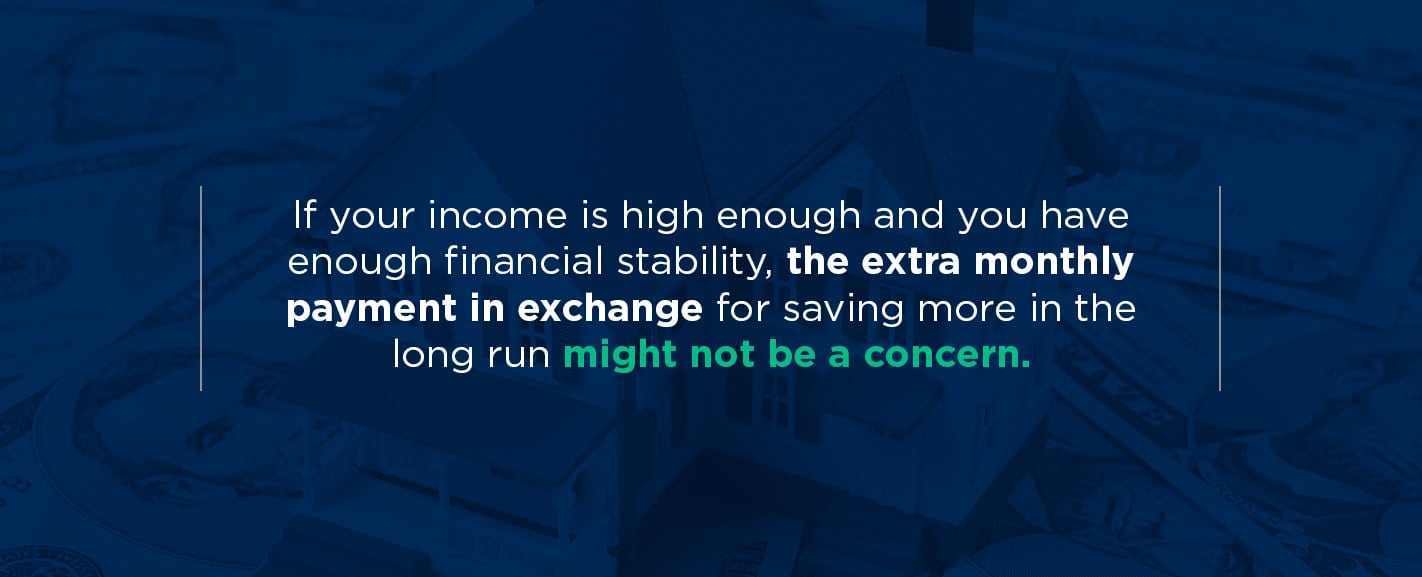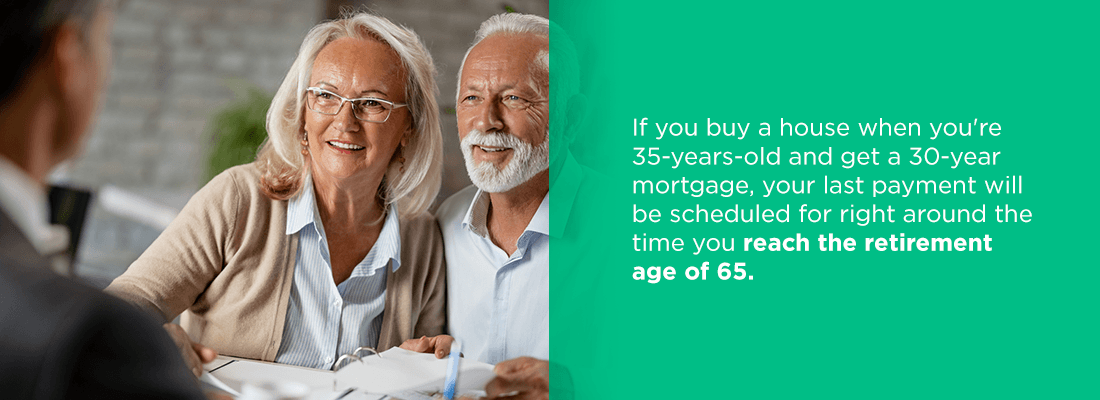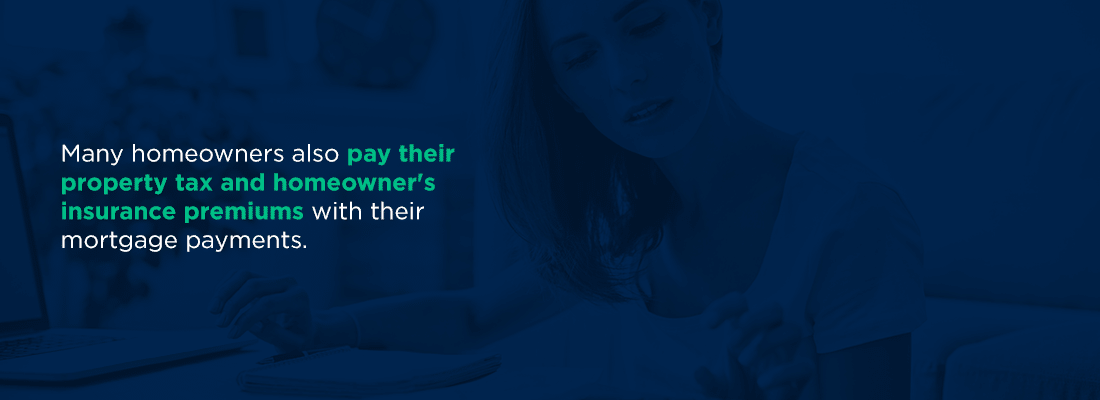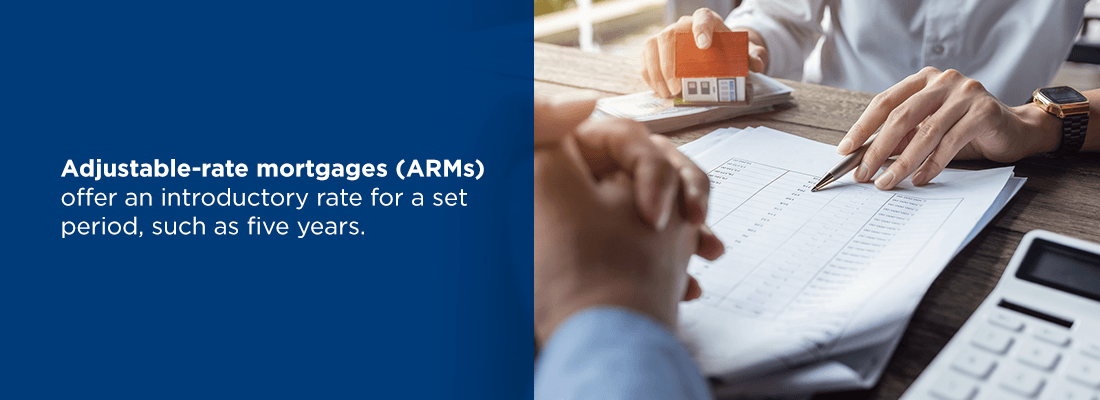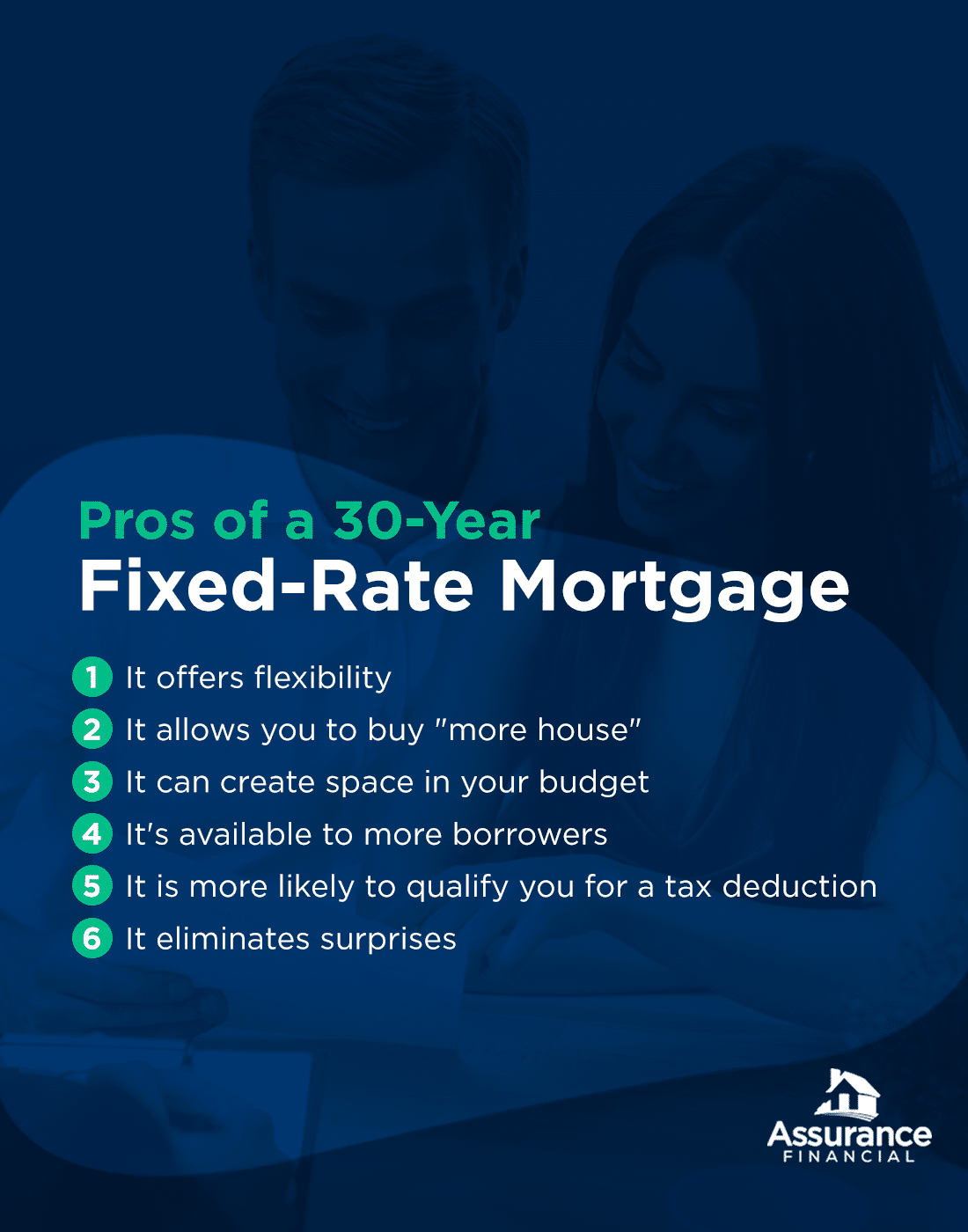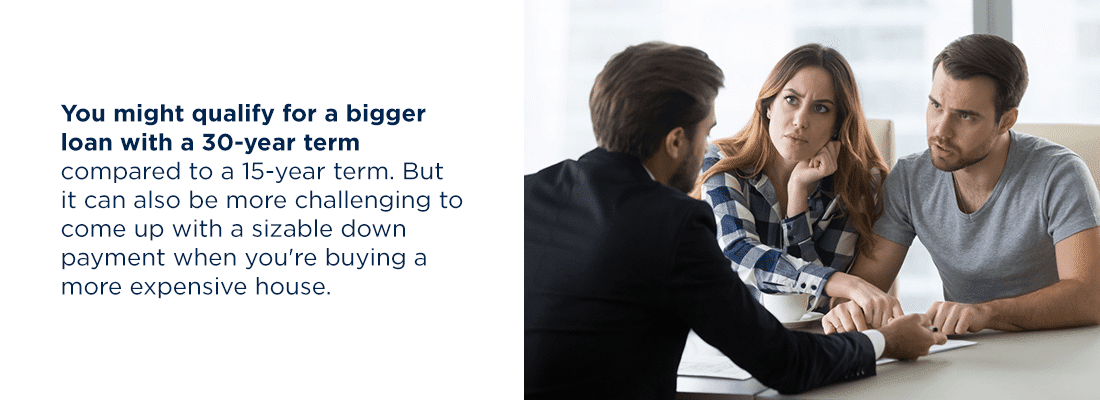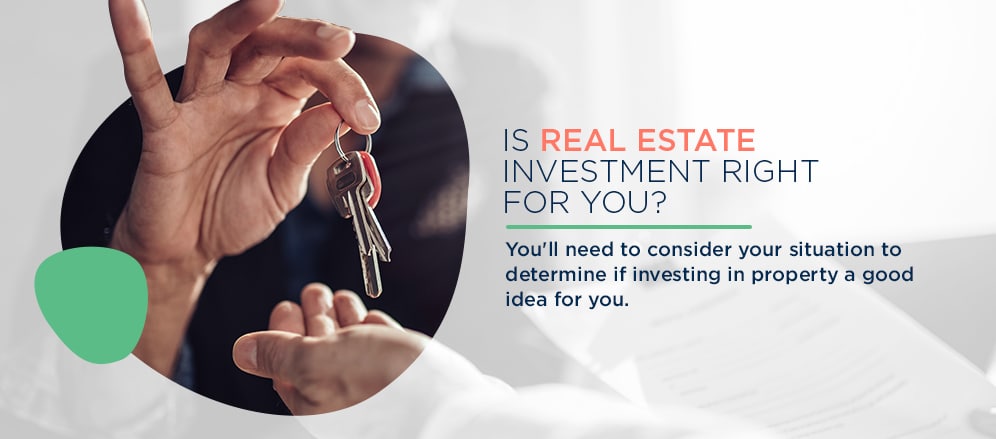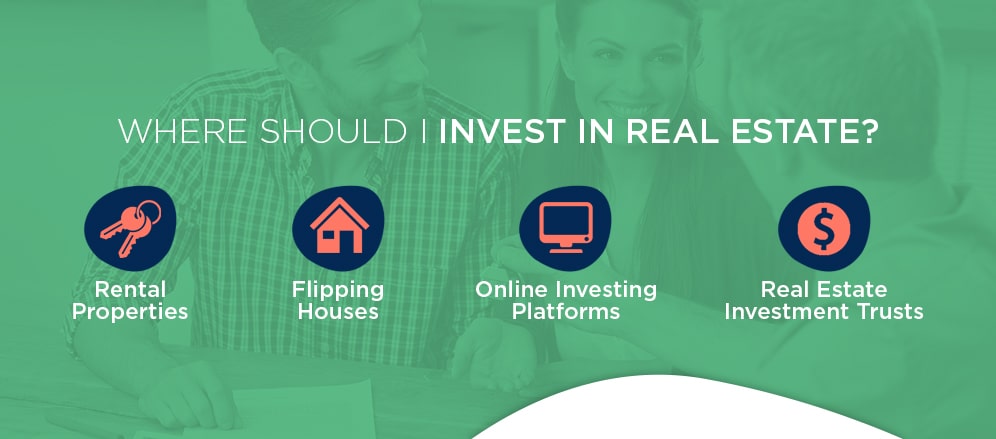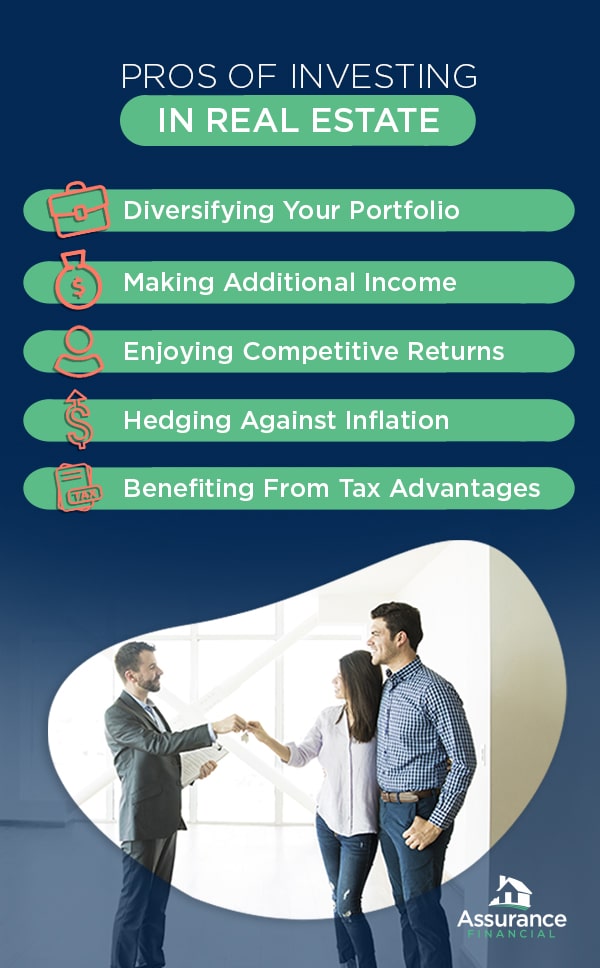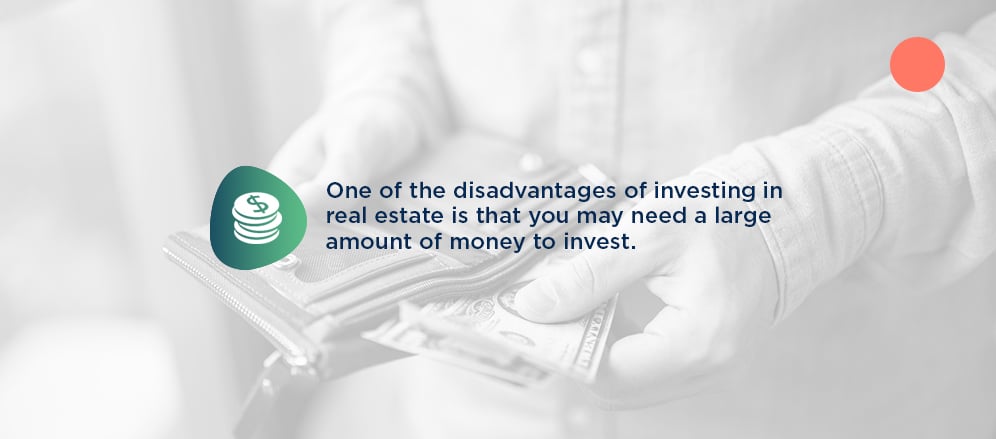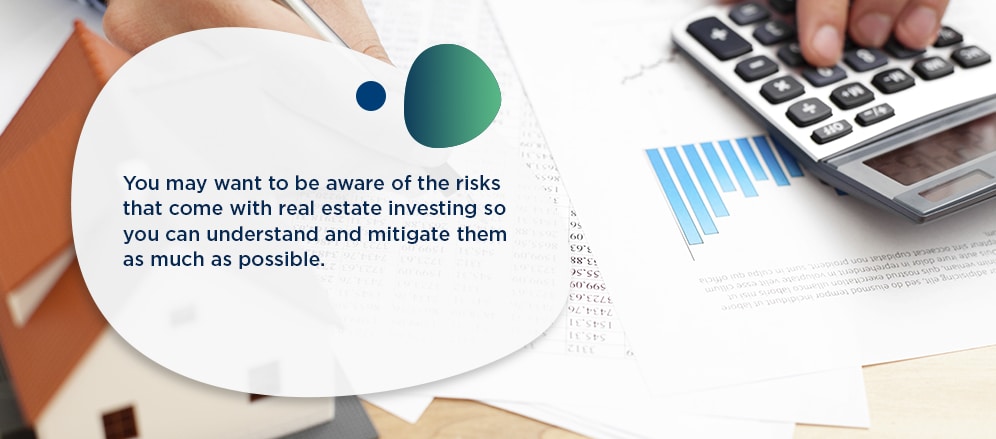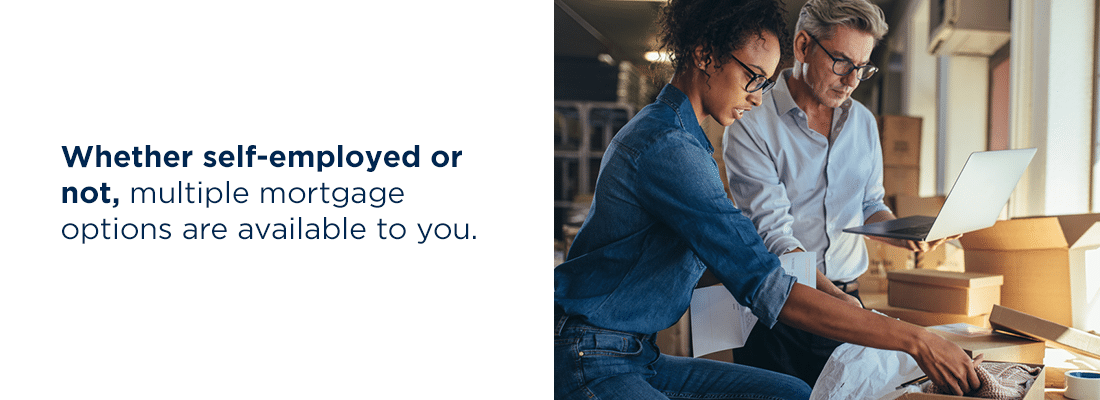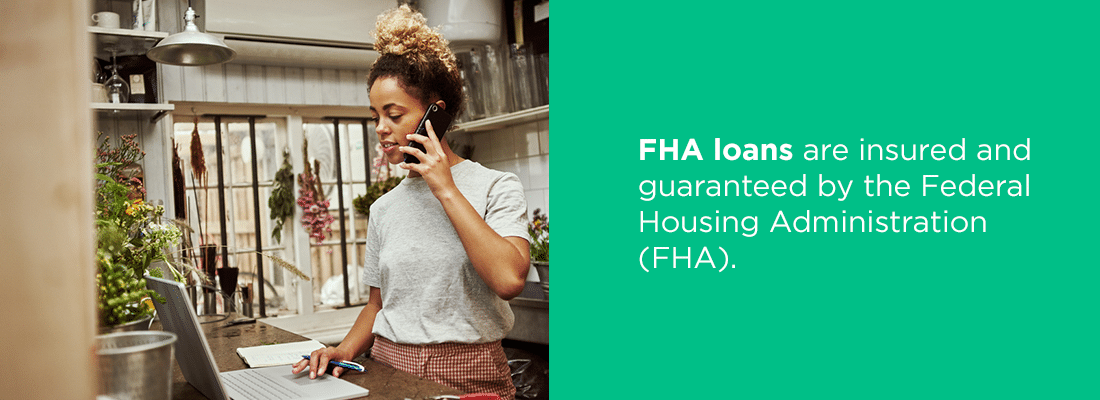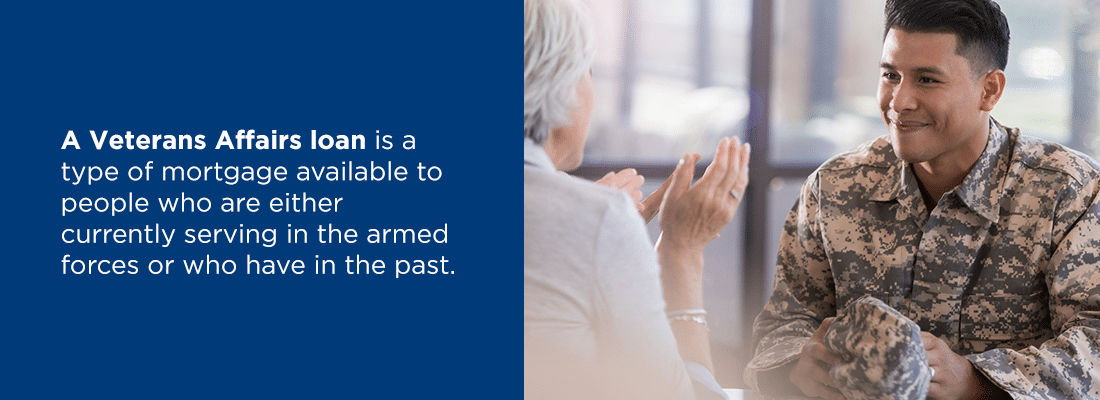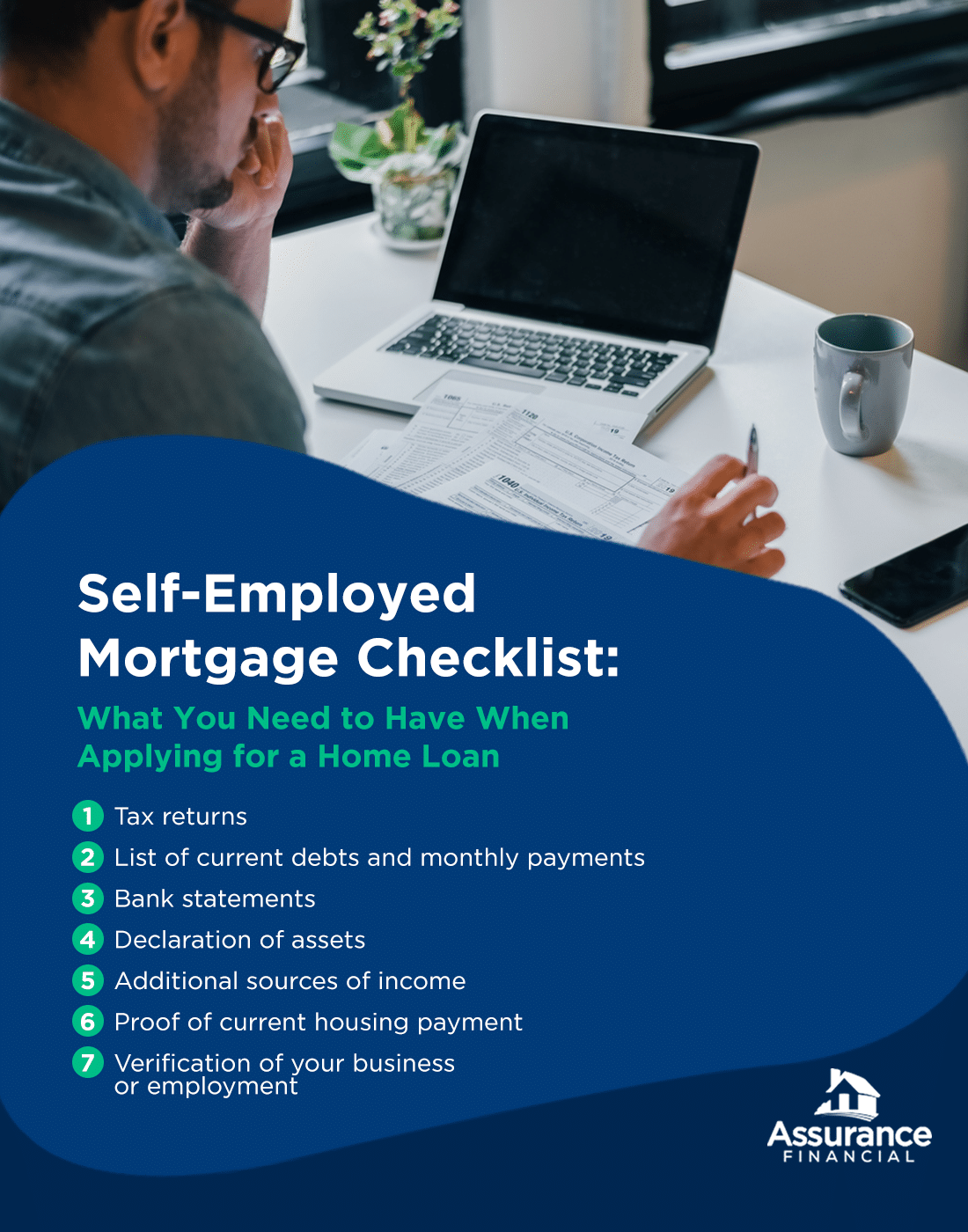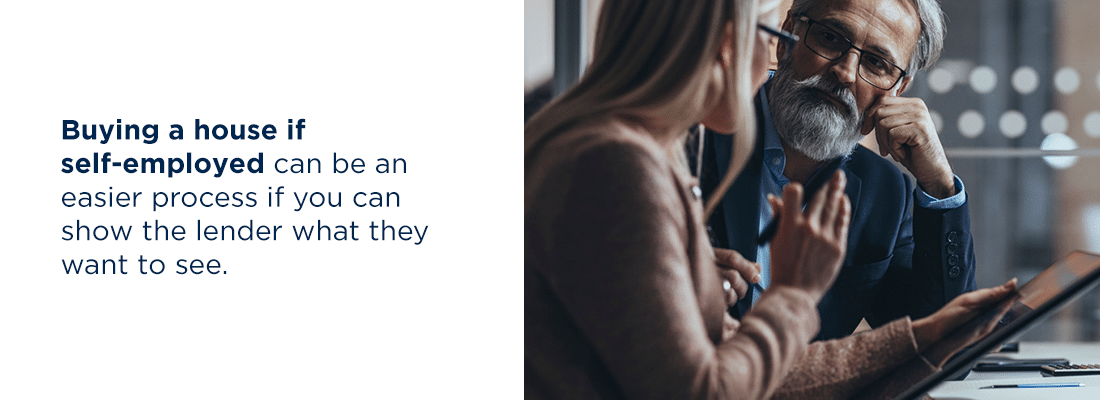Category: Loans
If you plan to buy a home or refinance an existing mortgage, you’ll likely encounter mortgage loan terms and definitions that may be unfamiliar — especially if you’re buying a house for the first time. Our mortgage glossary can help you better understand the terminology you’re likely to hear or read as you go through the loan application and homebuying process.
Use the home loan glossary below to get familiar with terms and definitions that might be new to you. As you go through the process of buying your home or refinancing a home loan, you can also ask your mortgage lender to explain any terms or phrases that are unclear to you.
Adjustable-Rate Mortgage (ARM)
An adjustable-rate mortgage has an interest rate that can change over the term of the loan. Often, the mortgage has an introductory rate that lasts for a defined period, such as five years. After the introductory period ends, the rate adjusts based on the market rate on a set schedule. You might see an adjustable-rate mortgage written as 5/1 or 7/1. The first number refers to the length of the introductory period, while the second is how often the rate can adjust.
Amortization
Amortization is the process of paying off a loan over a set period. As you make payments on the loan, the principal decreases, meaning the amount you owe drops. If you have a loan that amortizes, once you have made all the payments, you won’t owe anything on the mortgage anymore.
Annual Percentage Rate (APR)
The annual percentage rate is the cost of taking out the loan. It includes the interest rate charged on the mortgage as well as any fees, such as origination fees and closing costs. The APR is shown as a percentage rate and needs to be included on your closing disclosure.
Appraisal
Before you buy a home or refinance a mortgage, your property will most likely need to go through the appraisal process. During an appraisal, a professional will evaluate your home’s condition, how much similar homes have sold for recently and the overall market to determine the value of your home. The appraisal can be more than the price of the house or it can be less. If the property appraises for less than you are trying to borrow, there is a chance your mortgage will fall through.
Assessed Value
The assessed value of your home is how much it is worth in the eyes of the tax agency in your municipality. The assessed value is used to calculate your property taxes. It can be less than the market or appraised value of your home.
Balloon Loan
A balloon loan doesn’t fully amortize over the term of the mortgage. If you have a balloon loan, you can expect to have one large, or “balloon,” payment due at the end of the term. With a balloon loan, you still make monthly payments during the term, but they tend to be small and aren’t enough to pay down the principal fully.
Base Rate
A base rate is the interest rate used as a reference point when setting the rate for an ARM or another loan with a variable rate.
Cash to Close
Cash to close is the amount of money you need to bring with you to closing. Your cash-to-close amount will include the closing costs and the down payment. The closing disclosure you receive a few days before you close will let you know how much you need to bring. You don’t have to bring actual cash with you. A certified check or wire transfer is also permitted.
Certificate of Eligibility
If you are interested in a VA loan, your certificate of eligibility will verify that you are eligible for the loan. The federal government issues the certificate.
Closing Costs
Closing costs are the fees you pay to the lender to finalize the mortgage in addition to transfer fees paid to your local government, appraisal fees, attorney’s fees and title report fees. The exact amount of your closing costs depends on where you are buying and the value of your home.
Closing Disclosure
Your lender will provide the closing disclosure three business days before your closing date. The closing disclosure outlines the cost of the loan, including the amount you’re borrowing and the interest and APR. It also details the costs you’ll need to pay at closing. It’s important to review the disclosure before closing to make sure there are no errors or to correct issues if there are any.
Conforming Loan
A conforming loan meets the requirements set by Freddie Mac and Fannie Mae, two government-sponsored organizations that buy mortgages. The limit for a conforming mortgage varies by area, based on the cost of housing. A mortgage that is above the limit is known as a non-conforming or jumbo loan.
Credit Score
A credit score is a three-digit number that gives a lender an idea of your credit history and the likelihood that you will repay your loan. Several different methods exist for calculating credit scores, and they usually range from 300 to 850. Factors that affect a credit score include the length of credit history, repayment history, variety of credit, amount of credit and your activity, such as applying for credit cards and loans.
Default
Default occurs when a person stops making payments on their mortgage or is otherwise unable to keep up with the terms of the loan — for example, making partial payments instead of the total amount due each month. Defaulting on a mortgage can cause your credit score to drop. If you don’t resume payments or bring the account current, you could lose your home through foreclosure.
Down Payment
The down payment is a portion of the price of the home that you pay upfront. Although 20% is considered the “gold standard” down payment to make, you can get a mortgage and buy a home putting down a smaller amount, in some cases, as little as 3%. The bigger your down payment, the lower the cost of your mortgage.
Earnest Money
Earnest money is a portion of the sale price of the home that a buyer pays upfront, after the seller accepts their offer. The deposit shows that a buyer is serious and allows the seller to take the home off the market. If the buyer backs out of the sale, the seller gets to keep the earnest money. If the sale falls through because of the seller or because of an agreed-upon contingency, the buyer gets the earnest money back.
Equity
Equity is the difference between a home’s value and the amount a person owes on the mortgage. As homeowners pay down the mortgage principal, they can leverage their equity by borrowing against it.
Escrow
A lender might set up an escrow account where they hold money that goes toward your property tax payments and homeowners insurance premiums. Each month, your mortgage payment includes an amount that goes into escrow. When insurance or property taxes are due, the lender pays the insurance company or government with funds from your escrow account.
Fair Market Value
Fair market value is how much your home is likely to sell for if you put it on the market. The fair market value might be the same as appraised value, but it might also be higher.
Federal Housing Administration
The Federal Housing Administration (FHA) is a government agency created to guarantee mortgages and help people who don’t qualify for other types of mortgages to buy a home. Under the FHA loan program, the agency guarantees loans made by private lenders, offering to pay the loans if the borrower defaults. People who take out FHA loans need to pay an upfront mortgage insurance premium as well as a mortgage insurance premium for the life of the loan.
Fixed-Rate Mortgage
A fixed-rate mortgage has an interest rate that remains the same for the entire term of the loan. With a fixed-rate home loan, you can lock in a low rate when interest rates are low. If you buy when rates are higher, you might refinance later if rates drop.
Foreclosure
If a borrower stops making payments on the mortgage, the lender can foreclose on the loan, meaning the lender takes control of the property. During the foreclosure process, the lender will try to gain back the balance owed on the loan, often by selling the property.
Good Faith Estimate
A good faith estimate is a form a lender provides when a person applies for a mortgage or reverse mortgage. It provides a detailed list of the costs that might be connected to the loan.
Home Inspection
A home inspection is a visual inspection of the property that is often part of the homebuying process. The inspection can make the buyer aware of potential issues in a home. A buyer can use the information gleaned from the inspection to negotiate with the seller. Depending on the results of the inspection, a buyer can walk away from the property, the seller can offer to fix things or everything can proceed as normal.
Homeowners Insurance
If you have a mortgage, you will most likely have to get homeowners insurance, which provides coverage if the home is damaged by a storm or fire. Insurance also protects you against theft. You can purchase add-ons to your homeowners insurance coverage if you own a lot of jewelry or other high-value items or if your home is located in a flood plain.
Interest-Only Loan
With an interest-only loan, your payments only cover the cost of interest, at least for a few years. The principal balance remains the same. An interest-only loan can mean that you have a low monthly payment, at least for the first part of your repayment term. Since they are high-risk, it can be difficult to find lenders that offer interest-only loans.
Interest Rate
While the APR is the total cost of the loan, the interest rate is the annual cost. Usually, it is expressed as a percentage.
Jumbo Loan
A jumbo loan, or non-conforming loan, is a mortgage that has a value that is above the conforming limits Fannie Mae and Freddie Mac set. Jumbo loans usually cost more to the borrower than conforming loans and are often more difficult to qualify for.
Lien
A lien is a claim on a property, usually placed by a lender or creditor as a type of security in case a borrower defaults. When you have a mortgage, the lender puts a lien on the property. In some cases, liens can interfere with the sale of a home, which is why a title search and title insurance are often part of the sale process.
Mortgage Insurance
Mortgage insurance is designed to protect the lender in case a borrower stops making payments on the loan. People who put less than 20% down when buying a home usually have to purchase private mortgage insurance and need to make premium payments until they have paid down at least 20% of the value of the home.
Negative Amortization
When a mortgage has negative amortization, the monthly payments aren’t sufficient enough to pay off the interest owed. The remaining interest gets added to the principal balance, making it possible for the amount owed to increase.
No-Closing-Cost Loan
A no-closing-cost loan displaces the closing costs, it doesn’t eliminate them. Instead of paying upfront during closing, the closing costs are rolled into the loan. The lender might add the costs to the loan’s principal or they might charge a slightly higher interest rate.
Owner Financing
Owner financing means that the seller of the home is offering a loan to the buyer, not a traditional bank or lender. The seller might offer to finance the entire purchase or offer partial financing.
Points
Points refer to an amount the buyer pays the lender at closing to reduce the interest rate. They are sometimes called mortgage points or discount points. Essentially, they are a way to prepay interest.
Preapproval
The preapproval process gives you an idea of how much a lender will let you borrow and what your interest rate will be. If you go through preapproval, you’ll get a letter from the lender verifying they have reviewed your financial details and that they are likely to let you get a mortgage.
Prepayment
If you pay more on your mortgage than the required monthly payment, you are making a prepayment. Some, but not many, mortgages charge a prepayment penalty, meaning you might have to pay a fee if you make higher than the minimum payment. Prepayment can reduce the total cost of your mortgage and allow you to own your home outright sooner.
Prequalification
Prequalification is an early estimate of the amount you can borrow or if you’d be approved for a mortgage. It’s less formal than a preapproval and doesn’t represent a commitment by the lender. It can be a good starting point to see if buying a home is a possibility.
[download_section]
Principal
The principal is the amount of money you’ve borrowed and owe on your mortgage. As you make payments, some of the payment goes toward the principal each month, lowering the amount you owe. If you pay extra on your mortgage, you can designate the additional payment to go toward the principal to speed up the time it takes to pay off your loan.
Rate Lock
When a lender makes you an initial offer to lend, they will also likely give you a rate lock, meaning the rate offered won’t change between the day of the offer and the day of closing. A rate lock helps you avoid paying a higher than expected interest rate or APR on your mortgage.
Refinance
When you refinance, you take out a second mortgage and use the proceeds from it to pay off your initial home loan. You can refinance for a variety of reasons, such as reducing your interest rate, shortening the term of your loan or getting cash for another project. During the refinancing process, your home will most likely be appraised again and you’ll need to go through the closing process again.
Seller Concessions
One way to reduce your closing costs is to get the seller to agree to seller concessions, or paying some of the costs. You can ask a seller to pay a percentage of the closing costs or to cover specific costs. Depending on the market, some sellers might offer concessions upfront to make their property more desirable.
Term
The term of a mortgage refers to its duration. The most common mortgage term is 30 years, but 15-year mortgages are also fairly common. It’s also possible to get a 10-year or 20-year mortgage. The longer the term of a mortgage, the lower your monthly payment, but the more you’ll pay in interest over the length of the loan. Shorter-term mortgages also usually have lower interest rates.
Title
The title of a home is a record of who has owned it. Before you buy a property, it’s essential you make sure it has a free and clear title. If someone else has claim to the title, they could step in and interfere with the sale or complicate things after closing. To prevent title disputes, most lenders will require you to buy title insurance and to have a title check completed before closing.
Title Insurance
Title insurance protects the lender or the buyer of a property from claims on the title of a home after the sale. It’s usually required before you get a mortgage.
Underwriting
When a lender reviews your credit, checks your bank accounts and otherwise looks into your employment and financial history, they’re performing underwriting. The underwriting process is a critical part of the mortgage approval process. It allows a lender to finalize the amount of your loan and the interest rate charged. If anything unusual comes up during the underwriting process, a lender might decide not to give you a mortgage.
USDA Loan
A USDA loan is a mortgage either directly from the U.S. Department of Agriculture (USDA) or guaranteed by the USDA. The mortgages are designed to help people buy properties in rural or suburban areas.
VA Loan
VA loans are guaranteed by the Department of Veterans Affairs. They are designed to help people who are veterans or are currently serving in the armed forces to purchase a home. VA loans offer up to 100% financing, meaning a person who is eligible for the mortgage can secure a loan without a down payment.
Walk-Through
A walk-through is the last inspection of a home, made right before closing. During it, the buyer can verify that the seller has made any repairs agreed upon and that the home is otherwise in the same condition it was in when the buyer made their offer.
Wire Transfer
A wire transfer is a way to send money from one bank account to another electronically. It’s an option for paying for closing costs during settlement.
Apply for a Mortgage in Just 15 Minutes With Assurance Financial
Knowing the definition of commonly used mortgage terms can help you through the homebuying process. If you’re ready to get started buying your home or refinancing an existing home, Assurance Financial can help. Apply online today or find a loan officer near you.
Linked:
- https://assurancemortgage.com/what-is-an-amortization-schedule/
- https://www.consumerfinance.gov/owning-a-home/closing-disclosure/
- https://assurancemortgage.com/jumbo-loan-vs-conforming-loan/
- https://assurancemortgage.com/how-to-build-credit-to-get-loan/
- https://assurancemortgage.com/what-to-expect-closing-day/
- https://assurancemortgage.com/what-to-expect-during-a-home-inspection/
- https://assurancemortgage.com/why-get-pre-qualified-before-looking-for-home/
- https://assurancemortgage.com/everything-you-need-to-know-about-30-year-fixed-rate-mortgages/
- https://assurancemortgage.com/15-year-fixed-mortgage-rate/
- https://assurancemortgage.com/usda-loans/
- https://assurancemortgage.com/va-loans/
- https://assurancemortgage.com/apply/
- https://assurancemortgage.com/find-a-loan-officer/
If you’ve served in the armed forces, the VA loan program can help make your dream of becoming a homeowner come true. The VA loan program is one of the most generous government-backed mortgage programs available, as it doesn’t require a down payment or mortgage insurance.
You might have a lot of questions about VA loan requirements before you apply. Here’s everything to know about VA home loans so you can decide if it’s the right step to take on the path toward homeownership.
What Is a VA Loan?
A VA loan is a type of mortgage. The loan usually comes from a private lender, such as Assurance Financial, but is backed by the Department of Veterans Affairs. VA loans have several features that set them apart from conventional mortgages or other types of government-sponsored home loans:
- They usually don’t require a down payment.
- They don’t require private mortgage insurance.
- They typically have lower interest rates and lower closing costs.
- They are only available to people who have a connection to the U.S. armed forces.
Why Do VA Loans Exist?
The VA loan program was created after World War II, in the mid-1940s, as part of the Servicemen’s Readjustment Act. The goal of the loan program was to help soldiers who were returning home from the war or their widows purchase a home. The Act aimed to smooth soldiers’ readjustment into civilian life. Since the program got started, more than 18 million VA loans have been created.
How Does a VA Loan Work?
One common source of confusion about VA loans is the origination of the loan. Many people assume that the U.S. government issues the loans directly to borrowers. While there are VA direct loan programs, most VA loans come from private lenders.
Private lenders, including banks, credit unions and mortgage companies, issue the loans to eligible veterans or active-duty service members with a guarantee from the Department of Veterans Affairs. If the borrower should stop making payments, the VA guarantees the loan and will step in and make the payments.
Having the VA’s guarantee doesn’t mean the borrower is free and clear if they have to default on their mortgage or fall behind on payments. Their credit score will still take a hit, and it is possible to foreclose on the home if the borrower can’t get current on their payments.
Instead, the VA’s guarantee helps protect the lender. The company issuing the loan can feel confident that the VA will step in and make the payments if the borrower falls behind. The VA’s guarantee reduces the lender’s risk, meaning it can offer better interest rates to borrowers.
Can You Foreclose on a VA Loan?
A VA loan can go into foreclosure. The VA has programs in place to help borrowers avoid foreclosure, though. A veteran struggling to repay their mortgage can get help from the VA, whether they have a VA loan or not.
If a veteran does have a VA loan, they can request assistance from a VA loan technician if they are concerned about missing payments or falling behind. Once a borrower falls more than 61 days behind on payments, the VA automatically assigns a technician to their case.
A VA loan technician will review a borrower’s options with them to help them avoid foreclosure. Options might include:
- Modifying the loan to reduce monthly payments.
- Moving the loan into forbearance so a borrower has additional time to make payments.
- Creating a repayment plan to help the borrower make up any missed payments.
- Delaying foreclosure so a borrower can sell the home.
- Arranging a short sale of the home if the loan amount is more than the home’s value.
- Transferring the deed instead of foreclosure.
Generally speaking, borrowers who purchased their home after 1990 will not have to repay the government if they foreclose on the house.
How Is a VA Loan Different from Other Government-Backed Mortgages?
A VA loan differs from other government-backed mortgages, such as an FHA loan or USDA loan, in a few different ways. Like VA loans, FHA and USDA loans are guaranteed by the federal government — either the Federal Housing Administration or the U.S. Department of Agriculture.
The main difference between VA loans and FHA loans is that FHA loans usually require a borrower to take out mortgage insurance. The borrower has to pay the mortgage insurance for the life of the loan. FHA loans also have higher down payment requirements than VA loans.
A significant difference between VA loans and USDA loans is the type of home you buy. USDA loans are designed to encourage homeownership in rural or suburban areas. If you apply for a USDA loan, you can’t buy a house in the city or a highly developed area.
The source of the loans can also vary. Some USDA loans come directly from the government, while private lenders generally issue VA and FHA loans.
Do VA Loans Take a Long Time to Close?
The VA lending process doesn’t take longer than the conventional mortgage process. The average time to close for conventional and VA loans is the same — about 44 days. VA loans also have a slightly higher closing rate than conventional loans, at 70% versus 67%.
What Are the Requirements and Terms for a VA Loan?
VA loans aren’t available to all borrowers. Beyond meeting the service eligibility requirements, you might also have to meet financing requirements to qualify for a loan. Financing requirements can vary from lender to lender.
What Are VA Financing Requirements?
Since the VA approves private lenders to issue most VA loans rather than issuing the loans directly, those private lenders usually establish any financing requirements for borrowers. However, they may base their financing requirements on recommendations from the VA.
For example, a lender is likely to look at your income when determining how much you can borrow. They’ll use a debt-to-income (DTI) ratio to determine if you can afford to make payments on the mortgage. The ratio compares the amount of money you bring in to the amount you pay towards obligations, such as your mortgage, car loans and other debts monthly.
While there’s no actual upper limit on the debt-to-income ratio, 41% seems to be the magic number for most VA lenders. If a lender agrees to let someone borrow enough that their debt-to-income ratio is more than 41%, the lender needs to provide a compelling reason why.
Similarly, the VA doesn’t have strict requirements regarding a borrower’s credit history and score. But a lender might. For example, a lender might decide not to approve a veteran with a credit score below 600.
Do VA Loans Have a Down Payment?
Generally speaking, VA loans do not require a down payment since the VA itself guarantees the loans. Although a borrower can decide to put some money down when purchasing a home, many don’t. Almost 90% of all VA loans are issued without a down payment.
With conventional mortgages, the recommended down payment is usually 20%. While it’s possible to get a conventional loan with less money down, borrowers who put down less typically have to pay private mortgage insurance (PMI) and higher interest rates. That’s not the case with a VA loan.
Do You Need Mortgage Insurance for a VA Loan?
Some lenders require a borrower to take out private mortgage insurance in certain situations, such as a conventional loan when a person puts down less than 20% or an FHA loan. PMI protects the lender, as it backs the loan and will cover payments if a borrower defaults.
When a person puts down a smaller down payment, the lender considers them a riskier borrower. PMI helps to mitigate that risk. In the case of a conventional loan, PMI is no longer required once a person has made enough payments to build up 20% equity in their home. FHA insurance payments are for the life of the loan.
There are no VA loan PMI requirements, fortunately. Even with zero percent down, a VA loan borrower can skip the PMI because the VA is essentially acting as mortgage insurance.
How Much Are Closing Costs on a VA Loan?
VA loans often have lower closing costs than conventional mortgages or other government-backed home loans. The VA puts certain limits on lenders that restrict the fees they can charge. For example, the lender can’t charge you settlement or attorney’s fees at closing, nor can they charge prepayment penalties. A lender can charge a loan origination fee, title fee and appraisal fee, among others.
One closing cost you’ll encounter with a VA loan but not with other types of mortgage is the VA funding fee. The VA funding fee helps to reduce the tax burden of the VA loan program. The size of the fee is directly tied to the size of your down payment. If you put less than 5% down, the fee is 2.3% for your first VA loan. If you put more than 5% down, the fee ranges from 1.4% to 1.65%.
What Is the Interest Rate on a VA Loan?
Often, borrowers who qualify for a VA loan can get a lower interest rate than they would on a conventional mortgage. VA loans usually have lower interest rates than other mortgages because of the government guarantee.
However, there’s no set interest rate for VA loans. One lender might have slightly higher or lower rates than another. Shopping around allows you to compare rates before committing to one lender.
Is there a Loan Limit for a VA Loan?
Unlike some mortgages, there’s no hard and fast limit for the amount you can borrow with a VA loan. Instead, borrowers receive entitlements based on the price of the home they are buying. If a veteran has full entitlement, they don’t have a loan limit.
What might restrict the amount a person borrows is their income compared to their debt. Ideally, the debt-to-income ratio will stay below 41%, meaning some homes might be out of a borrower’s budget.
What Type of Property Can You Buy With a VA Loan?
You need to use a VA loan to buy a property you’ll live in. You can’t use the mortgage to buy a second home or investment property. However, you can buy a property with up to four units and rent out some of the units. You can also buy a property such as a condo, as long it’s in a VA-approved development.
[download_section]
Who Qualifies for a VA Loan?
To qualify for a VA loan, you need to be a veteran or active duty member of the U.S. armed forces or the surviving spouse of a service member. Whether you can get a VA loan or not depends on how long you’ve served.
What Are the Service Requirements for a VA Loan?
As a general rule of thumb, the service requirements to qualify for a VA loan are either 90 or 181 days. If you’re currently on active duty or served during wartime, the requirement is 90 days. If you served during a time of peace, the 181-day requirement applies.
There are some exceptions to the 90- or 181-day requirements. If you received a hardship discharge, had a disability connected to service or had certain medical conditions, you might qualify for a VA loan without fulfilling the 90 or 181 days. You aren’t eligible for a VA loan if you were dishonorably discharged or discharged for bad conduct.
How Do You Get a Certificate of Eligibility?
Applying for the Certificate of Eligibility (COE) is the first step toward proving your eligibility for a VA loan and getting approved for the loan. You can apply for a COE online. Before you apply, make sure you have the appropriate paperwork, such as your discharge papers or a signed statement of service.
If you are applying for a VA loan because you are the surviving spouse of a service member who died, you also need to get a COE, but the application process is slightly different.
Can a Civilian Get a VA Loan?
Generally speaking, civilians can’t get VA loans. You need to be a current service member or a veteran to qualify for the loan program. The one exception is if your spouse was in the armed forces and died or was disabled while in the line of duty.
While you can’t qualify for a VA loan if you have no connection to the armed forces, you do have other government-backed loan options available, such as the USDA loan program or FHA loans. You can also take advantage of programs designed for first-time homebuyers that might not be connected to the federal government.
Do You Have to Get Pre-Qualified for a VA Loan?
When you’re in the market to buy a home, it’s a good idea to get pre-qualified before you start the official house hunt. That’s true whether you’re applying for a conventional mortgage or a VA loan.
During the pre-qualification process, the lender will review your credit, income and assets and give you an idea of the interest rate you’d get on a loan and the amount you can borrow. Going through the pre-qualification process helps you feel confident that you can get approved for a loan and buy the home of your dreams.
Can You Get a VA Loan After Bankruptcy?
Yes, it’s possible to qualify for a VA loan after filing bankruptcy or having other credit difficulties. You’re likely to be eligible for a VA loan sooner after bankruptcy than other mortgage types. Depending on the type of bankruptcy, you can apply for a VA loan between one and two years after filing.
If you’ve had to foreclose on a home in the past, you can still qualify for a VA loan later. Usually, you’ll be eligible for a VA loan two years after a foreclosure, provided you meet other qualification requirements.
What Types of VA Loans Are Available?
The VA has several loan programs. The type of loan that works for you depends on where you are in the home buying or owning process and if you meet specific eligibility requirements. Get to know the various types of VA loans.
What Is a VA Purchase Loan?
A VA purchase loan is probably the mortgage that comes to mind when most people think of the VA loan program. It’s designed to help veterans or active-duty service members buy a home. The loan comes from a private lender and is guaranteed by the VA. You can use a VA purchase loan to buy or build a home or to make an existing home more energy-efficient.
What Is a Native American Direct Loan?
While VA purchase loans come from private lenders, Native American Direct Loans (NADL) come directly from the VA. Like purchase loans, NADLs don’t require a down payment or private mortgage insurance. The closing costs on NADLs are also low, though you will need to pay the VA funding fee.
To qualify for a NADL, you need to be a veteran and you or your spouse needs to be Native American. The home you purchase with a NADL needs to be on federal trust land. You can also use the loan to refinance a NADL or to improve or build a home on federal trust land.
What Is a VA Cash-Out Refinance Loan?
If you already have a home loan but qualify for a VA loan, refinancing might make sense for you. The VA has two refinancing options. The first is a cash-out refinance loan. When you get a cash-out refinance, you generally borrow against the equity in your property. The refinancing process lets you get some cash, which you can use to renovate the home or for any other purpose.
One benefit of a VA cash-out refinance loan is that it lets you switch a non-VA loan to a VA loan so you can take advantage of a potentially lower interest rate, low closing costs and as little as zero down.
What Is a VA Interest Rate Reduction Refinance Loan?
The second refinancing option from the VA is the interest rate reduction refinance loan (IRRRL). With the IRRRL, you can switch from a loan with a higher interest rate to one with a lower rate or switch from an adjustable to a fixed-rate loan.
To get an IRRRL, you need to have a VA purchase loan already.
Apply for a VA Loan With Assurance Financial in 15 Minutes or Less
A VA loan can put homeownership within your grasp if you’re a veteran or otherwise meet the loan’s eligibility requirements. With Assurance Financial, finding out if a VA loan is right for you can take less than 15 minutes. Start the application process today to get ready to buy your dream home tomorrow.
Sources:
- https://assurancemortgage.com/va-loans/
- https://assurancemortgage.com/conventional-loans/
- https://www.military.com/money/va-loans/history-of-the-va-loan.html
- https://www.va.gov/housing-assistance/home-loans/trouble-making-payments/
- https://assurancemortgage.com/fha-loans/
- https://assurancemortgage.com/usda-loans/
- https://assurancemortgage.com/fha-vs-va-loans/
- https://www.benefits.va.gov/BENEFITS/factsheets/homeloans/VA_Guaranteed_Home_Loans.pdf
- https://www.va.gov/housing-assistance/home-loans/loan-types/
- https://www.va.gov/housing-assistance/home-loans/funding-fee-and-closing-costs/
- https://www.va.gov/housing-assistance/home-loans/loan-limits/
- https://www.va.gov/housing-assistance/home-loans/eligibility/
- https://www.va.gov/housing-assistance/home-loans/how-to-apply/
- https://www.va.gov/housing-assistance/home-loans/surviving-spouse/
- https://assurancemortgage.com/why-get-pre-qualified-before-looking-for-home/
- https://blogs.va.gov/VAntage/19931/va-busts-four-home-loan-myths-that-hurt-veteran-homebuyers/
- https://assurancemortgage.com/guide-to-cash-out-refinancing/
- https://assurancemortgage.com/apply
You plan on buying a house in the near future, and you know you’ll need a mortgage to do so. The question is, which type of mortgage may be best for you? Mortgages vary in term length, type of interest rate and the amount of interest charged. One available option is a 15-year, fixed-rate mortgage.
APPLY WITH ABBY IN UNDER 15 MINUTESStill have questions or need more information? Below is an overview of what this article covers!
Topics Covered
Frequently Asked Questions
- What Is a 15-Year Fixed Mortgage?
- How Does a 15-Year Fixed-Rate Mortgage Work?
- What Makes up Your Mortgage Payment?
- How Much Can You Afford to Borrow?
- Is a 15-Year Fixed Mortgage Right for Me?
- Apply for a Home Loan Online
As you weigh your mortgage options, it’s important to understand how getting a 15-year home loan will affect your monthly payments and how much you end up paying for your home over the long run. It’s also important to understand how a fixed interest rate differs from an adjustable rate. Get all the details on a 15-year fixed mortgage so you can determine if it’s the right option for you.
What Is a 15-Year Fixed Mortgage?
A 15-year fixed mortgage is a loan with a repayment period of 15 years and an interest rate that remains the same throughout the life of the loan. Like other types of mortgages, you use a 15-year, fixed-rate mortgage to buy property. Many people obtain a mortgage to buy their primary residence, while others obtain a mortgage to buy a vacation home or property to rent out to others.
To understand what a 15-year fixed mortgage is, it helps to break down some commonly used terms in the mortgage business:
- Term: The mortgage term is the length of time you have to repay the loan. At the end of the term, the entire loan needs to be repaid to the lender. The length of the term influences the size of the monthly payments, as well as the interest charged on the loan. Mortgages with shorter terms, like a 15-year home loan, are considered less risky to the lender, so they often have slightly lower interest rates compared to longer-term mortgages, like a 30-year loan.
- Interest: Interest is the price you pay to borrow money, usually a percentage of the loan, such as 3% or 4%. A lender determines your interest rate based on factors such as your credit score, income, the loan term and the market. The type of interest rate — whether it’s fixed or adjustable — also plays a part in determining when you pay.
- Fixed-rate: Some mortgages have a fixed interest rate. With a fixed-rate mortgage, you pay the same interest rate throughout the life of your loan. For example, a 15-year mortgage with a 5% fixed rate will have a 5% rate until the borrower pays off the mortgage or refinances. One advantage of a fixed-rate mortgage is that it allows you to lock in a rate when they are low. You can rest assured that your mortgage principal and interest payment will stay the same month after month, no matter what happens in the market. On the flip side, if you get a fixed-rate home loan when rates are high, you could be stuck paying a high interest rate for years.
- Adjustable-rate: Unlike a fixed-rate home loan, the interest rate on an adjustable-rate mortgage (ARM) changes at various points throughout the repayment period. Often, an ARM may have an introductory rate. The introductory rate tends to be lower than the interest rate available on a fixed-rate loan. After the introductory period ends, the rate may change based on whatever is going on in the market. It can go up, meaning your monthly payments may go up. It can also drop, meaning you may pay less each month. Some borrowers take out an ARM initially and later refinance to a fixed-rate loan.
- Principal: The principal is the amount of money you’ve borrowed to buy your home. If you purchase a $250,000 house, pay a 10% down payment of $25,000 and borrow $225,000, the $225,000 would be the loan’s principal. If you can pay extra against the principal as you pay down your mortgage, you can shorten the length of time it takes to pay off the loan completely.
- Mortgage insurance: Depending on the size of your down payment, you may have to pay mortgage insurance on top of the principal and interest charged on the loan. Mortgage insurance offers an additional layer of protection to the lender, in case the borrower struggles to make payments. It is usually required when a person makes a down payment under 20% of the home’s value. You can cancel the mortgage insurance payment once you have paid off enough of the principal to have 20% equity in your home.
How Does a 15-Year Fixed-Rate Mortgage Work?
A 15-year fixed-rate mortgage works similarly to other types of mortgages. You apply for the loan by providing proof of income, employment, assets and your credit history. If approved, you put down a certain amount of money, then make payments on the loan each month until it is paid off. The amount you can afford to borrow when you apply for a 15-year fixed mortgage depends on a variety of factors.
When you apply for a 15-year fixed-rate mortgage, you will typically take the following steps:
- Request a loan estimate from a lender: A loan estimate lets you know how much you can borrow, the interest rate and the anticipated closing costs. You can request estimates from multiple lenders to get a sense of what’s available.
- Indicate your intent to proceed: If you decide to move forward with one lender, you need to let them know. Lenders must honor the estimate for 10 business days, so you should decide if you’re moving forward within that time.
- Begin the application process: After you tell the lender you want to go ahead with the mortgage, you’ll need to submit documents, such as proof of income and bank statements, to start the formal application process.
- Prepare for closing: If all goes well with the application, home inspection and process as a whole, you can get ready for the closing date. It’s important to keep things moving as scheduled, as a delay in closing can mean you lose the rate you locked in or that you have to start over.
What Makes up Your Mortgage Payment?
One miscalculation many aspiring homebuyers make is to assume their monthly mortgage payment only includes the principal and interest. In reality, your mortgage payment includes multiple components. When you take out a 15-year home loan, your monthly payments can be divvied up in the following ways:
- Principal payment: This portion of your monthly payment goes toward the amount you’ve borrowed. As you pay down your mortgage, you’ll likely see the amount of your payment that goes to the principal increases while the amount you pay in interest decreases. Many lenders also let you pay additional amounts toward the principal to help pay off your mortgage more quickly. Paying more than the minimum due toward the principal monthly can help you get out of debt sooner.
- Interest: Think of the interest rate on your mortgage as the money you pay the lender in order to use their service. The lower your interest rate, the more affordable the loan is. As you pay down the principal, the amount you pay in interest each month shrinks.
- Homeowner’s insurance premiums: Your lender may also collect your homeowner’s insurance premiums and put them in an escrow account to be paid to your insurer. The size of your premiums depends on the value of your house and the amount of insurance you buy.
- Property taxes: Your lender may also collect your property tax payments and put them in an account to be paid to your local government by the due date each year. Property tax amounts vary widely from location to location.
- Private mortgage insurance: If you put down less than 20%, your lender may require private mortgage insurance. The amount varies based on the size of your down payment. The more you put down, the lower the insurance premium. Once you’ve made enough payments to equal 20% of the value of your home, you can ask the lender to remove the insurance.
How Much Can You Afford to Borrow?
You want to have a sense of how much you can afford to borrow before you start looking for a home and applying for a mortgage. Usually, since you pay off a 15-year home loan in half the time it takes to pay off a 30-year loan, the amount you can afford to borrow is less. You might be able to purchase a $200,000 home by putting 20% down if you apply for a 30-year loan. Since the monthly payments on a 15-year loan are often about twice as much as those on a 30-year loan, you might be able to purchase a $150,000 home with a 15-year loan.
You can use a mortgage calculator to compare the monthly payments on a 15-year versus a 30-year mortgage.
To determine how much you can borrow with a 15-year mortgage, pay attention to how much you can afford to pay each month. Look at your total debt compared to your total income. When getting a mortgage, your ideal housing ratio, also known as a front-end debt-to-income ratio, is 28%. With insurance and property taxes included, your housing payments should be within 28% of your total income.
Lenders also use the back-end ratio, which is all your debts compared to your income. An ideal back-end ratio is 36%. If you have other significant debts, such as student loans or car loans, your ideal monthly mortgage payment can end up being much lower than 28% of your total income.
While the 28 and 36% ratios are ideal, lenders understand that life can be complicated. Depending on your income or credit score, you might be able to borrow as much as 43% of your monthly income.
To get your monthly payments under the desired percentage of your income, you may need to either pay off some debts before applying for your mortgage or find a way to increase your earnings.
Is a 15-Year Fixed Mortgage Right for Me?
Paying off your mortgage in half the time can seem pretty appealing. Before you decide to apply for a home loan with a 15-year term instead of a 30-year term, it’s important to consider your personal situation. You’ll pay the loan off sooner, but that usually means a higher monthly payment or buying a less expensive house. Some things to consider before applying for a 15-year fixed-rate home loan include:
- Your income stability: Since a 15-year mortgage typically means higher monthly payments compared to a 30-year home loan, it’s vital that you have the income needed to afford those payments. It’s also helpful if you have a steady record of earning either the same amount or increasing amounts of income each year. If there’s a lot of up-and-down in terms of what you bring in or if you aren’t sure how long your current employment and income situation may last, it may not be the right time to get a 15-year mortgage.
- Current interest rates: Take a look at the current interest rates. If they are low, getting a mortgage with a fixed rate is likely to be in your favor, as you’ll get to keep that rate for years to come. If rates are on the high side, you might consider an ARM instead. When it comes time for the rate on your loan to adjust, you can refinance to a fixed-rate loan or keep the ARM.
- Your age: Your age or season in life can help you determine if a 15- or 30-year loan makes more sense. If you are older and approaching retirement, a longer term may have you making payments on your loan after you’re no longer working. If you don’t want to have a mortgage throughout retirement, choosing one with a shorter term can make more sense.
- Your other financial goals: Consider your other financial goals in light of your mortgage. If you are trying to save for retirement or save for your child’s education, you may not want to pay a considerable amount of your monthly income toward your home. On the other hand, if you have already achieved other financial goals or have a high amount of disposable income each month, putting that toward your housing payment can be a good move.
- The price of homes in your area: The average price of houses in your area may influence whether you can afford a 15-year mortgage or not. The more expensive homes are, the higher your payment may be. But if homes are relatively affordable, getting a 15-year loan can help you own your home outright in less time and for less money.
[download_section]
Pros of a 15-Year Fixed-Rate Mortgage
If you’re still not sure if a 15-year fixed-rate mortgage is right for you, it helps to look at a few advantages of this type of home loan:
- You build up equity more quickly: Equity is the difference between the value of your home and the amount you still owe on the mortgage. Having equity in your home gives you leverage. When you sell the home, you get more money from the sale if you have more equity in it. You can also use equity to borrow against your home to cover the cost of renovations or other repairs.
- You own your home faster: With a 15-year mortgage, you can own your home completely in half the time it would take if you were to get a 30-year loan. Once your home is fully paid off, your cost of living can drop significantly.
- You pay less in interest: Since you have a 15-year mortgage for less time than a 30-year loan, you usually end up paying considerably less in interest. More of your monthly payment goes toward the principal sooner. Although you have bigger monthly payments, the total cost of a 15-year loan is often much less than the cost of a longer mortgage.
- You might get a better interest rate: The less time you need to pay off a loan, the less of a risk you are in the eyes of a lender. Depending on other factors, many lenders are likely to offer lower interest rates on 15-year mortgages compared to 30-year loans.
- You don’t have to worry about interest rates changing: With a fixed-rate loan, the rate you pay on day one is the same as the rate you pay on day 5,000. You don’t have to worry that your payment may suddenly balloon or that you’ll be left with an unexpectedly high mortgage bill.
- You have the same payment month after month: A 15-year, fixed-rate mortgage eliminates one uncertainty from your life: How much your housing payment will be. When you rent, your monthly obligation can increase from year to year if your landlord decides to raise the rent. With an ARM, your payment can go up, as well. Your fixed-rate mortgage payment stays the same year after year, even if you begin to earn more money or other costs increase.
- You might be able to make a larger down payment: Since the price of the home you can buy with a 15-year mortgage could be lower than what you can afford with a 30-year mortgage, you may be able to put down more upfront — potentially saving you the cost of private mortgage insurance. For example, if you can afford a $200,000 home with a 30-year mortgage and have $30,000 to put down, your down payment would be 15% and you’ll have to pay mortgage insurance. If you can afford a $150,000 home with a 15-year mortgage and put $30,000 down, your down payment is 20%. Putting down 20% upfront can also make you more likely to get a lower interest rate, helping you save even more.
Cons of a 15-Year Fixed-Rate Mortgage
While a 15-year fixed-rate mortgage can have several benefits for the right borrower, there are also some potential drawbacks to consider:
- You have a higher monthly payment: Usually, the monthly payment required on a 15-year mortgage is higher than that required by a 30-year mortgage since you are paying the loan in half the time. If your income is high enough and you have enough financial stability, the extra monthly payment in exchange for saving more overall might not be a concern. But if you struggle to make ends meet each month or have other financial obligations, a high mortgage payment can be a challenge.
- You could end up “house poor”: You build up equity more quickly with a 15-year loan. This can also mean you end up house poor, meaning most of your net worth is tied up in your home. Day-to-day, that might not be an issue. But if you need cash quickly and don’t have a lot of savings or liquidity, it can pose a problem.
- You might have to buy a less expensive house: Depending on where you live, you might not be able to afford to buy a house with a 15-year mortgage. If housing prices are high, a 30-year loan might be a necessity to keep your monthly payment within reach. Another option may be to buy a smaller, less expensive home, such as a two-bedroom instead of a three-bedroom or a house in a neighborhood that offers fewer amenities.
- You might get stuck with a high interest rate: Interest rates fluctuate from year to year, so depending on when you buy your home, you may end up getting a higher rate compared to someone with similar income or credit who buys a home a year before or after you. Since the interest rate on a fixed-rate mortgage is the same for the life of the loan, you could be stuck with a high rate unless you refinance.
Apply for a Home Loan Online
Assurance Financial aims to help people achieve the American dream of homeownership. If you’re ready to make the first step towards buying your home, we’re here to help. Abby, our online mortgage assistant, can walk you through the process of putting together your application.
You can get started with Abby today or set up an appointment to put together your application at a time that works for you. If you’d rather talk to a representative right away, you can connect with a loan advisor in your state who can help you review your mortgage options and choose the one that works for you.
Sources
- https://assurancemortgage.com/purchase-your-home/
- https://www.consumerfinance.gov/ask-cfpb/on-a-mortgage-whats-the-difference-between-my-principal-and-interest-payment-and-my-total-monthly-payment-en-1941/
- https://www.lendingtree.com/home/mortgage/common-mortgage-terms/
- https://www.consumerfinance.gov/ask-cfpb/what-is-a-debt-to-income-ratio-why-is-the-43-debt-to-income-ratio-important-en-1791/
- https://www.phila.gov/services/property-lots-housing/property-taxes/real-estate-tax/
- https://www.mortgageloan.com/why-you-should-and-shouldnt-get-a-15-year-mortgage
- https://www.credit.com/blog/can-you-qualify-for-a-15-year-mortgage-113487/
- https://www.bankrate.com/calculators/mortgages/mortgage-calculator.aspx
- https://www.nerdwallet.com/mortgages/mortgage-calculator/calculate-mortgage-payment
- https://www.bankrate.com/mortgages/arm-vs-fixed-rate/
- https://www.rocketmortgage.com/learn/15-vs-30-year-mortgage
- https://www.fool.com/mortgages/4-reasons-to-get-a-15-year-mortgage.aspx
- https://www.bankrate.com/finance/mortgages/fixed-rate-mortgages-1.aspx
- https://www.quickenloans.com/learn/home-equity-and-how-to-use-it
- https://www.nerdwallet.com/article/mortgages/pros-cons-15-year-mortgage
- https://www.daveramsey.com/blog/what-is-a-15-year-fixed-rate-mortgage
- https://assurancemortgage.com/apply/
- https://assurancemortgage.com/find-a-loan-officer/
When you’re shopping for a home, there’s more to consider beyond the number of bedrooms, size of the yard and the location. You also need to think about how you’ll pay for the house. For many homebuyers, that means applying for a mortgage.
Not all mortgages are created equally. Some offer a fixed interest rate, which remains the same throughout the life of the loan. Others have adjustable rates, which can change based on a schedule. Some mortgages need to be paid off within 15 years, and others give you 30 years to pay.
A 30-year fixed-rate mortgage is the most popular option among homebuyers. Learn more about what it means to take out a 30-year home loan, what a 30-year fixed mortgage rate means and whether this loan is the right option for you.
What Does a 30-Year Fixed Mortgage Mean?
A 30-year fixed-rate mortgage is a home loan with a repayment term of 30 years and an interest rate that remains the same throughout the life of the loan. When you decide to take out a 30-year home loan with a fixed rate, the payment you owe each month is the same until you’ve finished paying the loan.
If your first month’s payment is $1,000, your 12th month’s payment will be $1,000, your 36th month’s payment will be $1,000 and so on. If the interest was 5% during the first year of the loan, it would be 5% in year two, year six, year 15 and year 29.
A mortgage rate can either be a fixed interest rate or a variable rate. A fixed-rate does not change while you are paying back your loan, while a variable rate, also referred to as an adjustable-rate mortgage (ARM), can change throughout a loan.
What Is the Average 30-Year Fixed Mortgage Rate?
Many factors influence mortgage interest rates. The average interest rate has risen and fallen over the years as a result of market conditions and other factors. For example, in 1980, the average interest rate on a 30-year home loan was 13.74%. In 2000, it was 8.05% and 20 years later, in 2020, the annual average interest rate was 3.11%. In 2021, the average interest rate increased from 2.74% in January to 3.07% in November. Fannie Mae predicts that in 2022 the average mortgage rate will rise.
Some of the factors that affect mortgage interest rates are outside of the control of the average person. Supply and demand have an effect on rates, for example. When there is a lot of demand for mortgages, interest rates usually increase. When demand is low, rates drop to make getting a mortgage more appealing to consumers.
There are a few factors that influence interest rates that homebuyers can control. The amount of other debt you have can influence your interest rate. If you have a lot of debt already, a lender might consider you a higher risk compared to someone with less debt. To compensate for the additional risk, they are likely to offer a higher interest rate.
Your credit history and score also influence the interest rate on a 30-year mortgage. Usually, the higher your score, the lower your interest rate. If you don’t have favorable credit at the moment, it can be a good idea to work on improving it before you apply for a home loan.
Finally, how much you put down upfront can also affect your interest rate. The bigger your down payment, the less of a risk you seem to lenders. In exchange, they are likely to give you a lower interest rate compared to a person who is making a smaller down payment.
Can You Pay Off a 30-Year Mortgage Early?
Thirty years seems like a long time. If you buy a house when you’re 35-years-old and get a 30-year mortgage, your last payment will be scheduled for right around the time you reach retirement at age 65.
One thing worth knowing about a 30-year mortgage is that just because you can take 30 years to pay it off doesn’t mean you are obligated to do so. Many lenders may let you pay off your loan early. Some do charge a pre-payment or early payment penalty, however. Before you pay extra on your mortgage, double-check to confirm that your lender won’t penalize you for doing so.
If you are interested in paying off your mortgage early, there are multiple ways to do so. If you get paid biweekly, you can try making biweekly payments on your mortgage instead of monthly. Divide your monthly payment in half and pay one half when you get your first paycheck of the month and the second when you get paid the second time. Since there are 26 biweekly pay periods in a year, you’ll end up paying 13 months’ worth of your mortgage rather than 12.
Another option is to add on an additional amount when you schedule your monthly payment. Even paying an extra $100 or $200 per month consistently can shave years off your mortgage.
How a 30-Year Fixed-Rate Mortgage Works
When you apply and are approved for a 30-year fixed-rate mortgage, two things are certain. Your interest rate will not change and your mortgage will be broken down into a series of payments over the course of 30 years. The payments include interest and principal together and remain the same throughout the loan.
Many homeowners also pay their property tax and homeowners insurance premiums with their mortgage payments. If you put down less than 20% of the price of the home, you will also have to pay private mortgage insurance (PMI) premiums until you’ve paid off enough of the principal to equal 20% of the home’s value.
Principal and Interest
The mortgage principal is the amount you’ve borrowed to pay for your home. If you buy a $250,000 home, pay a 20% down payment of $50,000 and borrow $200,000, the $200,000 is the loan’s principal. As you make payments on your mortgage, the principal shrinks.
Interest is the fee charged by your lender for giving you the loan. One way to look at it is the cost of doing business with a particular lender. Just as you might pay a lawyer or a doctor a fee for their services, you pay your lender for their services in the form of interest.
The cost of getting a loan can vary considerably from person to person because of interest. One borrower might be offered a 5% rate on a $200,000 loan, while another borrower might be offered a 3% rate.
Since interest is a percentage of the loan amount, it tends to be higher at the beginning of your repayment period than it is at the end. For example, when you first start making payments on your $200,000 home loan, you are paying 5% interest on $200,000. As you chip away at the principal, it shrinks and so does the interest in proportion.
Although you start out paying more interest than principal on your mortgage and eventually begin paying more toward the principal and less in interest, the payment you are required to make each month remains the same due to something called amortization.
Amortization Schedule
Loan amortization is the process of paying off your debt over a defined period with fixed payments. When a mortgage is amortized, the principal and interest are combined. It differs from other types of mortgage payment schedules because you pay the same amount and know what you need to pay from month to month. In addition to mortgages, other types of installment loans, such as car loans and student loans, typically get amortized.
An example of a mortgage that does not amortize is a balloon mortgage. If you were to agree to a balloon mortgage, you would make small payments each month for a set amount of time. Often, the payments would only cover the interest due on the loan. At the end of the repayment period, the remaining balance is due in full.
When you close on your house and finalize the 30-year fixed-rate mortgage, your lender can provide you with an amortization schedule. The schedule breaks down each payment over the life of the loan and details how much goes toward the interest on the loan and how much goes toward the principal. It also lists the ending balance on the loan at the end of each payment period, so you can keep track of your mortgage as you pay it off. You’ll also find the total amount of interest paid on the amortization schedule. The total interest gives you an idea of how much your mortgage will cost you over time.
Who Needs a 30-Year Fixed Mortgage?
Although 30-year fixed-rate mortgages are the most popular option for homebuyers, they are far from the only choice available. Some mortgages have adjustable interest rates, for instance. Adjustable-rate mortgages (ARMs) offer an introductory rate for a set period, such as five years. At the end of the introductory period, the rate changes based on the market.
An ARM can decrease if rates have dropped or increase if they have spiked. Although an ARM can offer you a lower rate than a fixed-rate mortgage at the start, there is the risk that your rate may increase later on, and with it, your monthly payment.
Thirty years is also not the only term available for a home loan. Some loans have 15-year terms. Less common are 10-year, 20-year or 25-year mortgages. The longer the mortgage term, the smaller the monthly payments are, as you have more time to pay the loan. A person who might struggle to make payments on a $200,000, 15-year loan might find they are comfortable making payments on a $200,000 30-year loan.
A 30-year fixed-rate mortgage can be the right option for you if:
- You live in an area with expensive housing: A 30-year home loan can put buying a home within reach, even in areas where the price of housing is high. Another way of thinking about it is that you can get more house for your money if you get a 30-year mortgage instead of a 15-year loan.
- You want a predictable payment schedule: Your mortgage payment can be predictable if you get a 30-year fixed-rate home loan. The interest and principal payment stay the same for the entire repayment period.
- You want a lower monthly payment: Since you are going to take twice as long to pay down the loan, the monthly payment on a 30-year loan is usually considerably lower than the payment due on a 15-year mortgage, even if the principal balance is the same. Paying less toward housing each month can mean you have more money to put toward other financial goals, such as saving for retirement or for your children’s education.
[download_section]
Pros of a 30-Year Fixed-Rate Mortgage
For many borrowers, the pros of a 30-year fixed-rate mortgage make it worthwhile.
1. A 30-Year Fixed-Rate Mortgage Offers Flexibility
When you take out a 30-year fixed-rate mortgage, you can stick to the amortization schedule provided by your lender or you can choose to pay extra on the loan, reducing your debt and speeding up the process of owning your home outright.
For example, you may decide to pay several hundred dollars more than you owe each month when you have the space in your budget to do so. But if your expenses increase or your income drops, you have the option of paying what’s due on the loan and holding off on making extra payments until you can afford it again.
2. A 30-Year Fixed-Rate Mortgage Allows You to Buy “More House”
You can often afford to buy a more expensive home with a 30-year mortgage compared to a 15-year loan, depending on your income. If you live in an area with high housing costs, a 30-year mortgage can make it easier to buy a home that meets your family’s needs and fits within your budget.
3. A 30-Year Fixed-Rate Mortgage Can Create Space in Your Budget
Since the monthly payment on a 30-year mortgage is often lower than the payment due on a 15-year loan, it can give you some wiggle room in your budget. You can use any additional income you have to pay down your home loan more quickly, or you can choose to save it for a rainy day or for another financial goal.
4. A 30-Year Fixed-Rate Mortgage Is Available to More Borrowers
Depending on your income and other financial circumstances, you might find it easier to qualify for a 30-year mortgage compared to other options. Since the monthly payments are lower for a 30-year compared to a 15-year mortgage, you can qualify for a 30-year loan with a lower income.
5. A 30-Year Fixed-Rate Mortgage Is More Likely to Qualify You for a Tax Deduction
You can deduct the interest you pay on your mortgage from your income each year, but it’s not always the most appropriate option. For itemizing your deductions to make sense, the amount needs to be more than the standard deduction.
In 2022, the standard deduction is $12,950 for single tax filers and $25,900 for married couples who file a joint return. For a head of household, the standard deduction is $19,400. Since you often pay more interest on a 30-year mortgage during the early years of repayment, it can make you more likely to save on your tax bill.
6. A 30-Year Fixed-Rate Mortgage Eliminates Surprises
A 30-year fixed-rate mortgage can be an ideal option for people who like predictability. You know what your payments are, so you can create a dependable budget. You don’t have to worry about costs increasing year after year, so it can eliminate some stress from your life.
Cons of a 30-Year Fixed-Rate Mortgage
A 30-year fixed-rate mortgage does have some drawbacks that are important to think about.
1. You’ll Pay More in Interest
Over the course of 30 years, you are likely to pay considerably more in interest on your mortgage than you would on a loan with a shorter term. For example, if you borrowed $160,000 with a 3.37% interest rate, you would pay $94,726.03 in interest over the 30 years. If you borrowed the same amount with the same interest rate for 15 years, you would pay $44,086.16 in interest over 15 years.
2. Interest Rates Are Usually Higher
You don’t just end up paying more interest over the life of your home loan when you have a 30-year mortgage. You might also have to pay a higher interest rate. Lenders consider risk when they set interest rates. A 15-year mortgage is typically considered a lower risk to a lender, as the term is shorter and there is less of a chance of a borrower defaulting. While 30-year mortgages are very common, they are also considered higher-risk and usually have somewhat higher interest rates.
3. Thirty Years Is a Long Time
Another thing to consider before applying for a 30-year mortgage is that 30 years is a relatively long time. It’s difficult to envision what your life will be like at the end of your mortgage term.
One thing to remember is just because your mortgage will be paid off in 30 years, it doesn’t mean you need to keep the loan for that long. If you can afford to pay extra toward the mortgage, you are free to do so. You can also sell your home before the 30 years is up and use the proceeds from the sale to pay off the mortgage.
4. It Will Take Longer to Build Up Equity in Your Home
Your home’s equity is the difference between the value of your home and the amount you owe on the mortgage. When you take out a mortgage with a shorter term, you pay down the principal relatively quickly, building up more equity in your home. With a 30 year loan, it takes longer to chip away at the principal, meaning you have less equity.
The longer it takes to build up equity, the greater the chance you may end up upside-down on the mortgage if the market takes a hit. When you’re upside-down, you owe more on the home loan than the house is worth.
5. It Can Be Harder to Put 20% Down
You might qualify for a bigger loan with a 30-year term compared to a 15-year term. But it can also be more challenging to come up with a sizable down payment when you’re buying a more expensive house.
For example, you’ll need $40,000 to put 20% down on a $200,000 house. The amount jumps to $60,000 for a $300,000 house. Not having 20% to put down doesn’t mean you can’t buy a house. It simply means you’ll have to pay PMI and you may not get the best possible interest rate.
6. You Might Buy More Home Than You’re Comfortable With
Another thing to consider when getting a 30-year mortgage is that you might end up buying more house than you can take care of or manage. Bigger houses tend to have higher upkeep costs. They also tend to require more care and attention compared to smaller, less expensive homes. For example, if you buy a home with a large yard, someone will need to take care of the yard.
Apply for a 30-Year Fixed-Rate Mortgage
When you find the home of your dreams, your next step is obtaining the right mortgage to fund your purchase. For many homebuyers, a 30-year fixed-rate mortgage is the best option, especially if you can secure a low interest rate and low monthly payments. At Assurance Financial, our team can help you achieve your dream of homeownership, and our services can offer you customized options to cover your home purchase.
We know that every homebuyer has individual needs, and as mortgage experts, we can help you identify the right solution for your unique financial needs. While buying a home is an exhilarating experience, it also requires a firm grasp of your financial situation, a thorough understanding of the terms you’re agreeing to and a long-term commitment to paying back a loan. Assurance Financial can help make sure you don’t run into any unexpected surprises on your homebuying journey and deliver the following advantages when you choose to work with us:
- Large range of mortgage loan options: To serve each of our homebuyers, we offer a variety of loan options, including conventional loans, FHA loans, VA loans and construction loans.
- Comprehensive approach to lending: We complete the entire lending process under a single roof, from application to closing.
- Versatile application process: You can choose whether you want to complete your application online or with the assistance of one of our loan officers.
- Recognition: We are approved by Fannie Mae, Freddie Mac and Ginnie Mae to service and issue mortgages.
If a 30-year mortgage with a fixed rate seems like a good option for you, applying for a home loan can be simple. Get started on your application today or schedule an appointment with a loan officer at a time that works for you.
Many people are turning to real estate investments these days. But how do you know if this is the right investment strategy for you? Is property a good investment now?
Real estate can be a good investment for anyone looking to diversify their portfolio and gain additional income. Though investing in real estate may not be the right option for everyone, many investors can get the most out of investing in real estate by following some simple tips. We have compiled this guide to show you why real estate is a good investment for some.
What Is Real Estate Investing?
There are actually quite a few ways to invest in real estate. While most people tend to assume real estate investing refers to buying rental properties to gain cash flow and appreciation over the long term, there are other ways to make money in real estate investment besides becoming a landlord.
The following are a few other methods of real estate investing:
- Flipping houses
- Wholesaling properties
- Buying and holding rental properties
- Becoming a limited partner in syndications
- Investing in a real estate investment trust (REIT)
The real estate investment strategy you choose will depend on how passive you want investing to be. Investing can be as simple as moving money into a REIT with a click of a button or as involved as flipping houses — which is more like starting your own business than investing in the stock market.
Because real estate investment can take several different forms, investing in real estate can be accessible to many investors regardless of their preferred investment strategy. Whether you want a passive or active investment, real estate investing can be the right choice for you.
Is Real Estate Investment Right for You?
You’ll need to consider your situation to determine if investing in property a good idea for you. Real estate can generate regular passive income for you and can be a long-term investment that increases in value over time. Many investors use real estate investment to begin building their wealth.
However, depending on what strategy you choose, real estate investment can require a significant amount of money and ongoing maintenance. Buying an apartment complex, house or piece of land can be quite expensive. If you purchase a property, you will also need to have enough income or savings to protect you financially from income gaps if you go a few months between tenants.
The Process of Real Estate Investment
Consider the following information you need to know about real estate investment to determine if this investment strategy is right for you:
1. Determine Your Funding Method
Financial experts tend to warn against investors borrowing money to buy investments. You may want to consider whether you can pay with cash before you buy a piece of real estate for investment purposes. If you cannot afford to buy the home with cash, you should at least be able to afford your mortgage payments for the home without rental income.
When you invest in rental properties, there is a chance you may experience high turnover with renters. In fact, you may experience a period of time in which you have no renters for the property. If you cannot afford to pay the monthly mortgage without the rental income, this may become more of a financial burden than an investment. If you cannot pay your mortgage payment, this could damage your credit and cost you more money in the long term.
2. Start Small
Many investors begin investing in real estate by starting small. You may want to start by buying a home with a basement apartment or purchasing a duplex, which can allow you to live in one unit and rent out the other to a tenant. If you are comfortable living in the same building as a tenant, this can be a good way to dip your toe into real estate investment while also mitigating your risk.
When you create your budget, ensure you can live comfortably while paying the entire mortgage without the need for rent payments. If you grow more comfortable with investing in real estate and managing a property, you may want to purchase a larger property that can increase your income potential.
Owning several properties makes it easier to buy and manage more properties, which means you will earn an even greater return on your real estate investments.
3. Research the Property
Doing your research is an important part of the home or land buying process. For example, if you have decided to purchase land to sell at a future date, you may want to research the deed for the land thoroughly. Are there new roads planned near the land you are purchasing? How might this affect the value of the property?
You may also want to determine whether there is a lien on this property. Consider the comparables in the area, particularly if there are any factors that may affect the value of the property. After you complete your research, you can more easily determine whether purchasing this property is the right investment for you.
4. Plan Your Expenses for the Property
Before you purchase a property for real estate investment, you may want to consider the additional costs of owning a property, such as repairs, utilities, taxes, homeowners’ insurance and upkeep.
You may also want to consider going through a rental company that can handle the ongoing maintenance of your property, such as rent collection and repairs. While working with a rental company will cost you money, it can also make owning and managing a rental property easier. If you do not have time to manage the property but you want to use this investment strategy, using an agency may be a good option for you.
When pricing your rental property, consider these fees and additional expenses. You may want to include these expenses in the price of the property to ensure you are fully covered. You may also want to save the surplus income from your first few months of rental property ownership to cover the costs of property repairs.
While every investment comes with some level of risk, you can help minimize your risk by doing your research and planning for the entire cost of a property ahead of time.
Where Should I Invest in Real Estate?
Figuring out where to invest in real estate can be tricky for first-time investors. Here is a list of some common places to invest in real estate:
1. Rental Properties
One way you may choose to invest in real estate is by investing in rental properties in your area or in another part of the country that has a booming real estate market. You may be able to find a property that will have combined expenses that are lower than what you can charge a tenant in rent. If you would rather not manage the property personally, you can hire a property manager to handle the ongoing maintenance for you.
2. Flipping Houses
Another way you may want to invest in real estate is by flipping houses. To flip a house, you first invest in a low-priced property in need of renovations. You can renovate the home as inexpensively as possible and resell the property for a profit. This can be one of the riskiest real estate investment strategies, but the return on investment can also be sizable and it comes as soon as you sell the home.
3. Online Investing Platforms
A more passive way of investing in real estate is by using an online platform. These investing platforms for real estate allow investors and borrowers to connect. Investors can help finance projects for developers through equity or debt. In exchange for paying a fee to use the platform and for taking on a large risk, an investor may receive a quarterly or monthly distribution.
4. Real Estate Investment Trusts
Another area in which you can invest in real estate is in REITs. If you want to invest in real estate but you do not want to deal with physical properties, you may want to consider purchasing REITs. These often pay high dividends, which is why they are a common retirement investment. If you do not want or need regular income, you can reinvest your dividends automatically to grow your investment further.
Pros of Investing in Real Estate
There are several advantages that make real estate a good investment for some individuals — including generating passive income, building wealth, offering tax advantages and building equity. While riskier than other investments, investing in real estate can offer greater returns than investing exclusively in the stock market. The following are the pros of investing in real estate:
1. Diversifying Your Portfolio
Many financial experts encourage portfolio diversification so clients can better manage their risk. If your financial advisor does not encourage real estate investment as part of your investment portfolio, this may simply be because they may not be able to make a commission if you buy and sell a property.
Investing in real estate can be one of the most beneficial ways to diversify your portfolio. You can enjoy greater security with tangible assets as opposed to the more volatile nature of stocks, mutual funds and bonds. Diversifying your portfolio is key to ensuring your financial security. By investing in real estate, you can receive a higher return and lower the volatility of your financial portfolio.
2. Making Additional Income
Another advantage of investing in real estate is that you can make additional income. Whether you enjoy passive income from a hands-off investment or you choose to purchase and manage a property yourself, investing in real estate can offer an additional, stable income that is protected from the volatility of the stock market.
If you want to increase your monthly and annual income, real estate investment can be a great option. Investments that supplement income tend to be less volatile than other investments and can make the difference between struggling during your golden years or securing dependable retirement savings.
3. Enjoying Competitive Returns
Real estate investment can potentially offer more competitive returns than stocks and bonds. You enjoy the returns every year from the passive income generated by the rental property, and you can also reinvest that income by purchasing additional properties or putting this money toward your retirement savings. You may also enjoy an annual appreciation of the property’s value.
4. Hedging Against Inflation
Another advantage of real estate investment is that you are protected from the long-term effect of inflation. Inflation refers to the economic reality of prices increasing over time because the value of money decreases.
Inflation can vary annually and negate the actual returns you get from other investments. However, real estate can be a hedge against inflation, as a property is a tangible asset and real estate keeps pace with inflation. Real estate is inherently limited in supply, which gives properties an intrinsic value and allows values to rise over time along with inflation.
If you have a fixed-rate mortgage on the property, the cost of owning the property will not increase, even as the price of rent increases. Inflation will increase the cost of living, which means your cash flow will increase while your cost of ownership does not. Inflation also increases the value of your property, so it will be worth more when you are ready to sell in the future.
5. Benefiting From Tax Advantages
When you invest in real estate, you may also be able to benefit from a range of tax advantages. When you invest in real estate using money that is in your 401(k) or an IRA, you may be able to buy an investment property or purchase shares of a real estate fund. When you do this, you may be able to collect ongoing income that is tax-deferred until your retirement. On the other hand, you can choose to pay the tax now, as you may be able to enjoy a lower tax rate than you will at retirement.
Even if you choose to purchase and manage a property yourself, you can also benefit from several tax deductions — like deducting maintenance and operating expenses, depreciation or paying long-term or short-term capital gains when you sell the property. You also will not have to pay self-employment tax on the cash flow from your rental properties.
Is investing in real estate worth it? For you, the advantages of real estate investment may make this a worthwhile investment strategy to add to your financial portfolio.
Cons of Investing in Real Estate
While investing in real estate can offer many advantages to investors, there are disadvantages to any investment. These could include the requirement of money and time and the risks that come with investing in real estate. The following are the cons of investing in real estate:
1. Real Estate Investing May Require Money Upfront
One of the disadvantages of investing in real estate is that you may need a large amount of money to invest. As the saying goes, you need money to make money, particularly if you are planning to purchase a rental property.
To buy a property, you may need a down payment and the money to cover closing costs and repairs. When you purchase the property, you will also need to cover ongoing expenses, such as mortgage payments, insurance, property taxes and maintenance. The cost of investing in real estate can be significant, so you may need to save a substantial amount before you are able to invest.
2. Real Estate Investing May Require a Lot of Time
Another disadvantage of investing in real estate is that you may need to invest a lot of your time. Along with managing the property, you may also need to spend your time learning how to invest in real estate and how to manage a property. There is a learning curve to investing in real estate, and you could lose money if you go in blindly. If you choose to manage your rental property actively rather than hire a property manager, this can also consume a lot of your time.
To save yourself time, you may want to hire a service that can manage your rental property for you. This can give you many of the benefits of owning a rental property without requiring a large investment of your time.
3. Real Estate Investing Tax Benefits May Not Apply to You
Unfortunately, tax benefits do not apply to every property owner. At certain levels of income, you may not qualify for certain tax advantages. Before you assume that you qualify for a tax break, you may want to speak with a tax professional who has experience in real estate and can provide you with advice that is specific to your financial situation.
4. Real Estate Investing Comes With Certain Risks
You may want to be aware of the risks that come with real estate investing so you can understand and mitigate them as much as possible. The following are some of the risks of real estate investment:
- Taking on too much debt
- Buying property at the wrong time
- Purchasing the wrong property
- Dealing with a bad tenant
- More liability for accidents that occur on your rental property
One of the biggest risks that investing in property can pose to investors is acquiring too much debt. You may want to ensure that you can make your monthly payments on time even when you are dealing with tenant problems, unexpected repairs, property vacancies, market dips and maintenance costs.
Though real estate investment can come with some disadvantages, the benefits often outweigh the risks for investors. If you are extremely risk-averse, investing in real estate may not be the right investment choice for you. If you are comfortable with taking on some risk in your investment strategy, real estate can be an excellent investment option for you.
Contact Assurance Financial to Start Investing
Assurance Financial was established in 2001 to service the loan industry. Our full-service, in-house team supports our branches and gives our loan officers the flexibility they need to serve their customers and territories. We service your loan from beginning to end to save you time. As The People People, we’ll provide you with the care you need every step of the way. At Assurance Financial, we can help you choose the right mortgage for your real estate investment.
Ready to start investing? Get in touch with Assurance Financial or apply for a loan with or virtual assistant Abby today.
Sources
In the U.S., nearly 10 million people are self-employed, and the number is expected to increase by nearly eight percent over the next few years. If you’re among the self-employed, you know things work slightly differently for you than for people who hold traditional W-2 jobs. Your income stream is different, and your tax situation is different. When it comes time to go through the mortgage process and buy a home, you might find things are different for a self-employed person, too.
There’s good news about buying a home with self-employment: It is possible. In fact, if you have good or excellent credit and can prove you have a steady stream of income, you might find your mortgage experience is similar to that of your traditionally-employed friends and family.
Best Mortgages for Self-Employed First-Time Buyers
Whether self-employed or not, multiple mortgage options are available to you. The type of mortgage that will best suit you depends on your credit, the amount you have saved for a down payment and where you’re hoping to purchase a home. Some mortgages are backed or guaranteed by the federal government, while others are not. If you’re self-employed and looking for a mortgage, consider these options:
1. Conventional Mortgage
The simplest way to describe a conventional mortgage is as a home loan that isn’t guaranteed by the government. When a lender issues a conventional mortgage, they are taking on more risk because the government isn’t there to pay back some or all of the loan balance if the borrower can’t.
Typically, conventional mortgages have tougher qualification requirements compared to other home loans. Borrowers typically need to have a very good credit score to qualify for a conventional loan. There’s also the issue of the down payment. Although people often think you need to put 20 percent down to get a conventional mortgage, you can put down less and still qualify.
If you put down any amount below 20 percent of the value of the home, you’ll have to pay private mortgage insurance, in addition to the principal and interest due each month. Once you’ve paid off at least 20 percent of the home’s value, you can ask the lender to remove the private mortgage insurance premium from your loan.
The term of a conventional mortgage can be up to 30 years. The longer the mortgage term, the more you’ll pay in interest over the life of the loan, but the lower your monthly payment will be. Conventional mortgages also offer the option of having a fixed interest rate, which stays the same for the life of the loan, or an adjustable rate, which fluctuates with the market.
2. FHA Loan
FHA loans are insured and guaranteed by the Federal Housing Administration (FHA). The FHA itself doesn’t make the loans. Instead, a mortgage lender or bank does. If a borrower defaults or isn’t able to pay back their mortgage, the FHA will step in. Since the FHA loan program offers extra protection to a lender, borrowers who might not have the best credit are often able to qualify for them.
FHA loans require a minimum down payment of 3.5 percent. If you have a higher credit score and can afford to make a bigger down payment — at least 10 percent — getting an FHA loan might not make sense for you, because of the fees and mortgage insurance requirements.
The loans require the borrower to pay mortgage insurance, in the form of a 1.75 percent fee at closing and a fee between 0.45 and 1.05 percent every year. Unlike a conventional mortgage, the annual mortgage insurance payment is often required for the life of the loan, even after a borrower has paid 20 percent of the value of the home. The only way to remove the mortgage insurance premium is to refinance to a conventional mortgage.
Like conventional loans, FHA loans are available in terms of up to 30 years. Interest rates can be fixed for the life of the mortgage or adjustable.
3. USDA Loan
If you’re self-employed and have always dreamed of living in the country or a relatively rural area, a USDA loan might be the mortgage that works for you. The USDA loan program provides mortgages with zero percent down on homes in designated areas. Two types of USDA loans are available: direct loans, which come right from the USDA, and guaranteed loans, which are made by a private lender. The guaranteed loan program is backed by the U.S. Department of Agriculture and guarantees up to 90 percent of the value of the loan.
Along with buying a home in an eligible area, you need to meet certain income requirements to qualify for a USDA loan. The mortgages are intended for people who have low to moderate incomes. The USDA provides an income eligibility calculator to use to see if your household falls below the maximum income threshold. Income maximums are based on the type of loan program. The maximum allowed income is lower for direct loans than it is for guaranteed loans.
It’s worth pointing out that although you can’t use a USDA loan to purchase a home in the middle of a major city or urban area, the “rural” requirements might not be as rural as you think. Many homes in suburban areas qualify for USDA loans.
4. VA Loan
A Veterans Affairs loan is a type of mortgage available to people who are either currently serving in the armed forces or who have in the past. How long you need to have served with the armed forces depends on when you were on active duty, usually anywhere from 90 days to 24 months. If you were married to someone who died while on active duty, you can also qualify for a VA loan.
Like USDA loans, VA loans allow you to buy a house without a down payment. Unlike FHA loans, there is no mortgage insurance premium required for VA loans. Interest rates on a VA loan also tend to be lower compared to other mortgages. Closing costs are also often lower, as well.
5. Bank Statement Loan
Unlike an FHA, VA or USDA loan, a bank statement loan isn’t a type of mortgage program. Instead, it’s a process of approving a person for a loan without requiring them to provide proof of income, such as a tax return. When issuing a bank statement loan, a lender looks at anywhere from one to two years worth of your bank statements to get a sense of your total incomings and outgoings.
A bank statement loan can be a viable option for a self-employed person who doesn’t have income tax returns or other verifiable proof of income. The trade-off is that the interest rate on the loan tends to be higher than for other options since the lender is taking on somewhat greater risk.
Self-Employed Mortgage Checklist
What You Need to Have When Applying for a Home Loan
Whether you go for a government-backed loan, a bank statement loan or a conventional mortgage, a lender is going to require a fair amount of documentation before approving you for a home loan. Some of the paperwork you will need to show a mortgage lender includes:
- Tax returns: You’ll need to submit business and personal tax returns if you have them. Your lender will look at your net business income to determine your eligibility. Depending on how long you have been self-employed, you might need to provide at least one or two years’ worth of returns.
- List of current debts and monthly payments: If you have any additional debts, you will have to let your lender know about them, including how much you pay toward your debt monthly. Having additional debt can affect the size of the mortgage you’re eligible for.
- Bank statements: If you decide to get a bank statement loan, you might need to provide up to 24 months’ worth of bank statements. Even if you verify your income using your tax returns, your lender will most likely still ask to see at one month’s worth of bank statements.
- Declaration of assets: Lenders also want to see proof that you have enough money for a down payment. You might need to submit a list of your assets, including money in savings account and investment accounts, when you apply for a mortgage.
- Additional sources of income: If you have other sources of income, such as alimony, Social Security or income from a job, your lender might want to see it, especially if it will affect your eligibility.
- Proof of current housing payment: You might need to give your lender canceled checks or other proof of payment for your current mortgage or rent.
- Verification of your business or employment: It’s not enough to say you’re self-employed. A lender will often want to see proof. The proof can be in the form of a business license, membership in a professional organization, letters from clients or a statement from your accountant.
In addition to documentation verifying your income, assets and debt, lenders might also ask that you fill out several forms, giving them permission to access certain information. For example, you might need to complete Form 4506-T, which gives the lender permission to access transcripts of your tax returns from previous years.
The exact documents required might vary from lender to lender. In some cases, there might be some flexibility from a lender. For example, if you don’t have one document, they might be willing to accept another in its place. What you need to provide might also vary based on your income and how long you’ve been self-employed. Usually, the higher your income and the longer your history of stable self-employment, the smoother the mortgage process will be.
What Lenders Like to See From Self-Employed Loan Applicants
Some self-employed mortgage candidates are more attractive to lenders than others. Buying a house if self-employed can be an easier process if you can show the lender what they want to see. A few things that will make your application more appealing and more likely to be approved include:
1. Good or Excellent Credit
The higher your credit score, the better, if you want to buy a house as a self-employed person. A good credit score is one that’s over 670, while an excellent score is one that’s over 800. Having a good to excellent credit score shows a lender that you have a history of making payments on time, of not taking on excessive amounts of debt and a decently long history of using credit.
If you aren’t sure what your credit is, it’s a good idea to request your score before you start the mortgage process. If it’s not good, you have time to raise it before you apply or begin looking for a house. Some things you can do to increase your score include paying on time, paying off high amounts of debt and avoiding opening new accounts.
Usually, lenders will check your personal credit before approving or denying your mortgage application. If your business has a credit rating, they will also look at that.
2. Stable Income
For the most part, your business or self-employment track record should be on the up-and-up. A lender not only wants to see proof of steady income over the years, but they also want to see some evidence that your income has grown over time. If your income has dropped in recent years, that can be a red flag or cause for concern for a lender and can affect your ability to be approved or can affect the size of the loan you qualify for.
If you had one or two bad years but an equal number or more good ones, you probably don’t have too much to worry about when it comes to getting approved for a mortgage. Your lender is likely looking at the big picture, not at micro trends. If one bad year is followed up by several years of increasing or steady income, a lender will most likely still approve your application.
3. Money in the Bank
In addition to the money you are using for a down payment, a lender might want to see that you have a reserve of cash to use in case times are tight. Having a sizeable emergency fund, such as several months to a year’s worth of mortgage payments set aside can make you more attractive as a borrower.
Another reason why it’s a good idea to have money in the bank is that you might need it to cover the cost of repairs or other surprise expenses as a homeowner. Ideally, you’ll be able to avoid taking on additional debt after you buy your house to keep it in good condition.
4. Steady Work
Someone who works a full-time, salaried or hourly wage job usually gets up and goes to work for 40-hours a week. Self-employment work can be a little more difficult to quantify, but generally speaking, a lender wants to see that you have steady work available to you. There are a few ways you can show a lender that you have regular work. If you’ve been self-employed for a few years, your tax returns might be proof enough.
If you’re relatively new to self-employment, you might show a lender any contracts you have with clients or letters from clients that state that you are doing work for them. The contracts or letters could describe the nature of the work, including how long it might last.
5. Ample Down Payment
You don’t need to put down 20 percent to get a mortgage and a home as a self-employed person. But being able to make a larger down payment can improve your chances of approval. Generally speaking, people who can pay 20 percent upfront are seen as a lower risk compared to people who make a five or 10 percent down payment.
A bigger down payment shows a lender that you’ve been capable of saving up a considerable amount of money. It also sends the message that you’re invested in your new home and might be less likely to default, since you’re putting so much into it from the beginning.
6. Minimal Additional Debt
Ideally, you won’t be going into the process of applying for a mortgage as a self-employed person with a lot of other debt. Your debt-to-income ratio, or the amount of debt you have each month compared to your monthly income, should be on the low side. If you’re applying for a mortgage, 43 percent is usually the highest allowable debt-to-income ratio. As a self-employed person with a variable income, you might want to aim for an even lower percentage.
If you have a lot of debt, whether it’s credit card debt, student loans or a car loan, you might want to focus on paying it down before you apply for a loan, especially if you are self-employed.
APPLY TODAYCommon Misconceptions About Getting a Mortgage While Self-Employed
There are some misconceptions and myths out there about the process of getting a home loan as a self-employed person. Small business owners might need to provide a lender with more or a different set of paperwork compared to employees, but overall, the process of getting approved is very similar for each type of person. Here are a few common sources of confusion when it comes to mortgages for the self-employed:
1. Lenders Look at Your Gross Revenue
For many self-employed people, it’s not quite clear what income a lender will use when deciding the size of loan someone is eligible for or if they’re even eligible at all. Lenders don’t look at your gross income or revenue — the amount you bring in before expenses and other deductions. They also don’t use your adjusted gross income on your tax return. Instead, they look at your net business income — the amount you bring in after you subtract relevant business expenses. That can mean the size of the loan you qualify for is smaller, but also that you’ll be more comfortable paying it back.
2. You Always Need a Co-Signer If You’re Self-Employed
You can be the only person on a mortgage, even if you’re self-employed. As long as you have good or excellent credit and a verifiable source of income, you should be good to go getting your own mortgage. There might be times when having a co-signer can be helpful, such as if you don’t have adequate proof of income, but they aren’t a requirement.
3. You’ll Get Stuck With a Higher Interest Rate
The interest rate a self-employed person pays on their mortgage can be the same or even lower than the rate a traditionally-employed person pays. The factors that influence interest rates include your credit score, how much you put down and the length of the mortgage. If you have an excellent credit score, put down 20 percent and get a 15-year mortgage, you might end up with a rate that’s lower than an employed person with a lower credit score gets by putting down 10 percent on a 30-year mortgage.
Get Started on Your Self-Employed Mortgage Application Today
Ready to see what type of mortgage is right for you or if you qualify for a mortgage as a self-employed person? Assurance Financial can help. We’re a team of loan advisors who can help you find the right mortgage and walk you through the process from beginning to end, step by step.
You can apply online in 15 minutes with us 24 hours a day, seven days a week.

